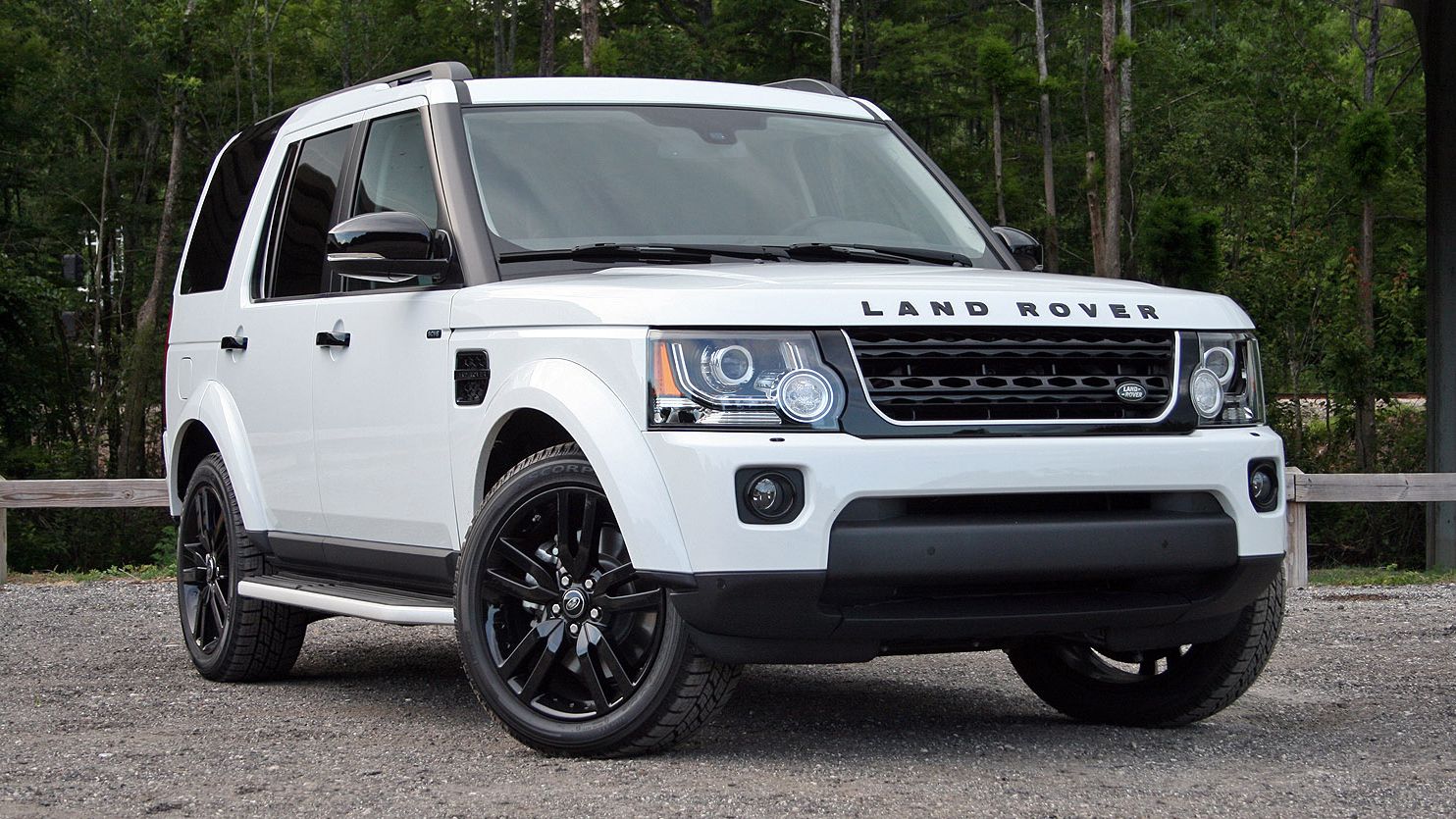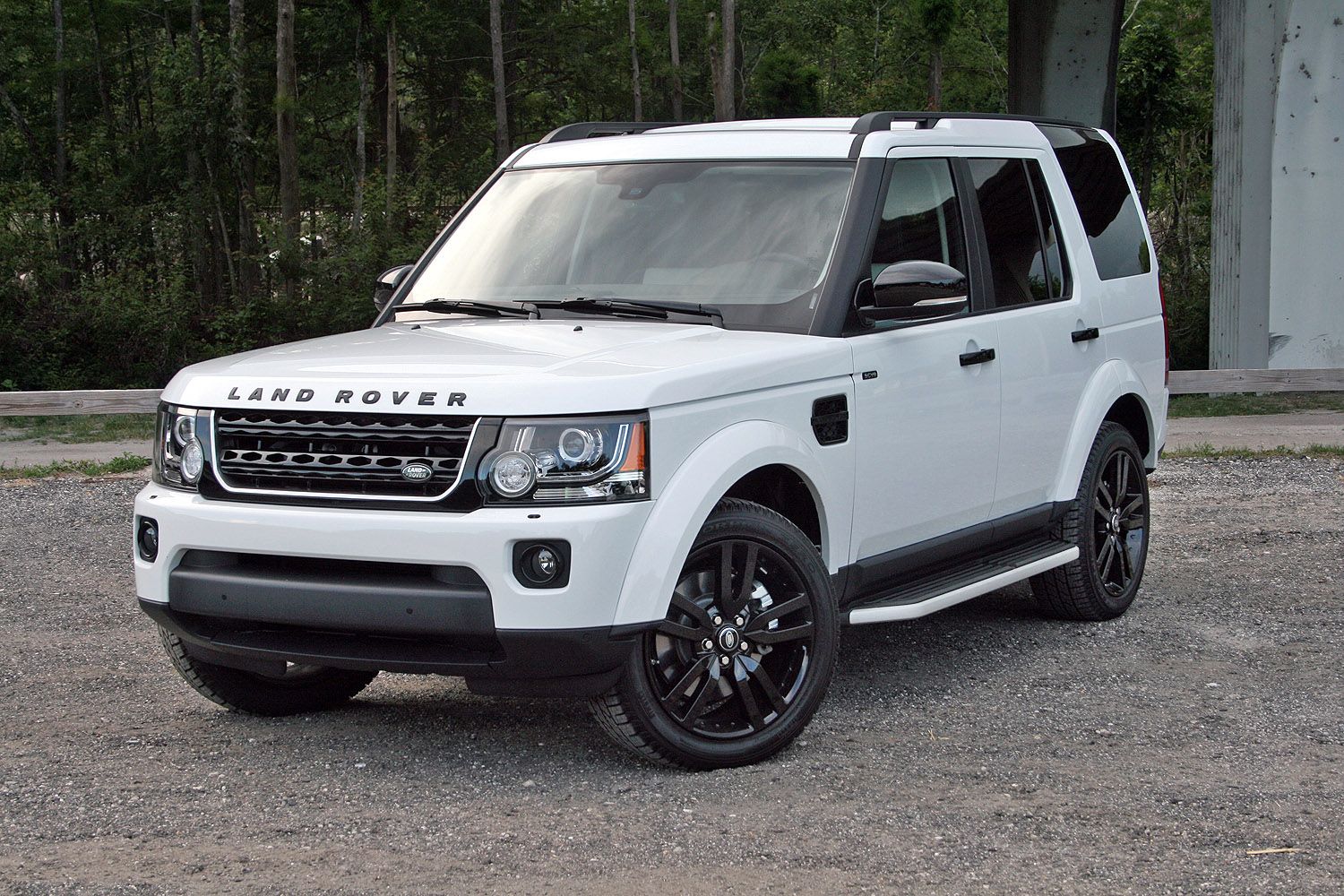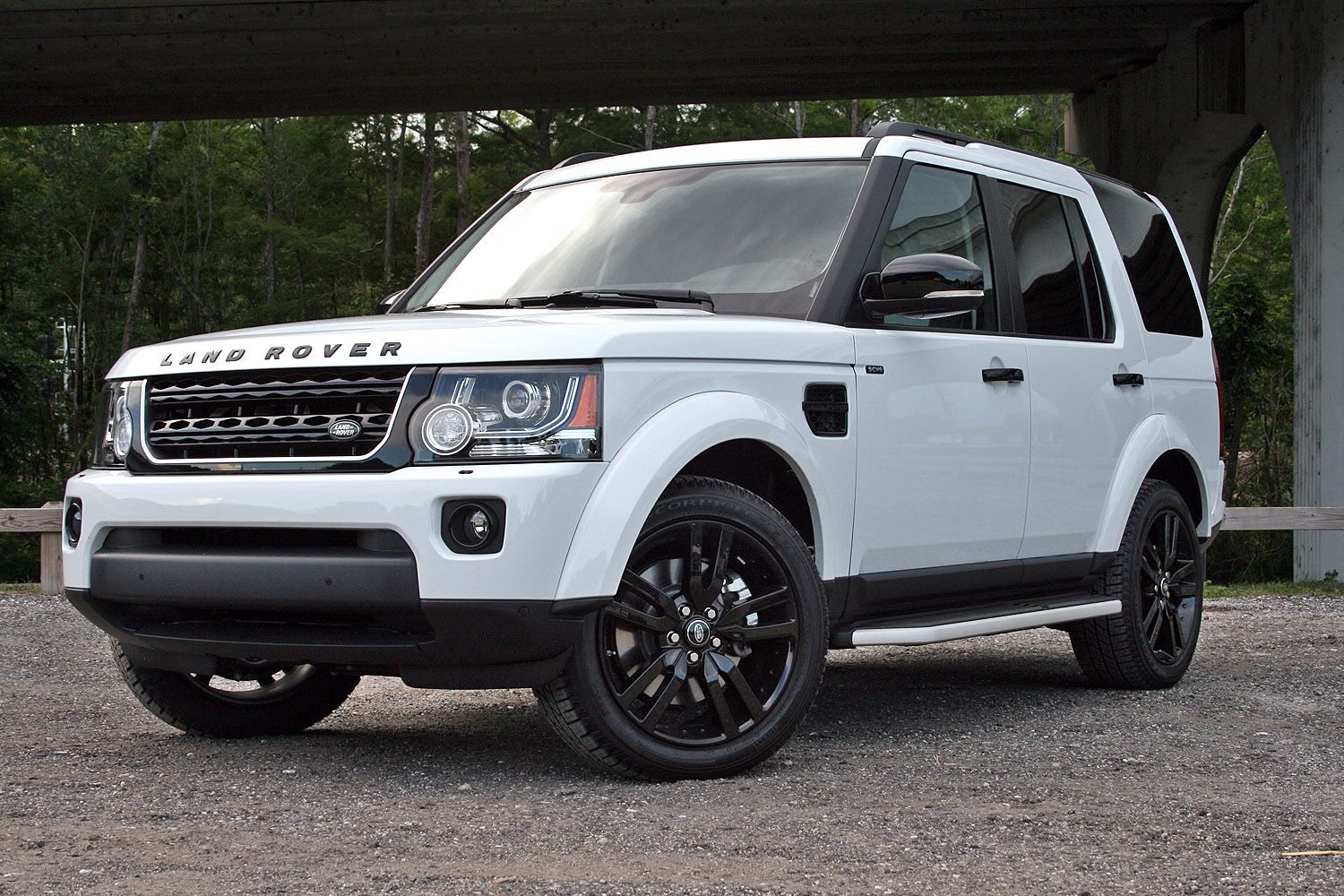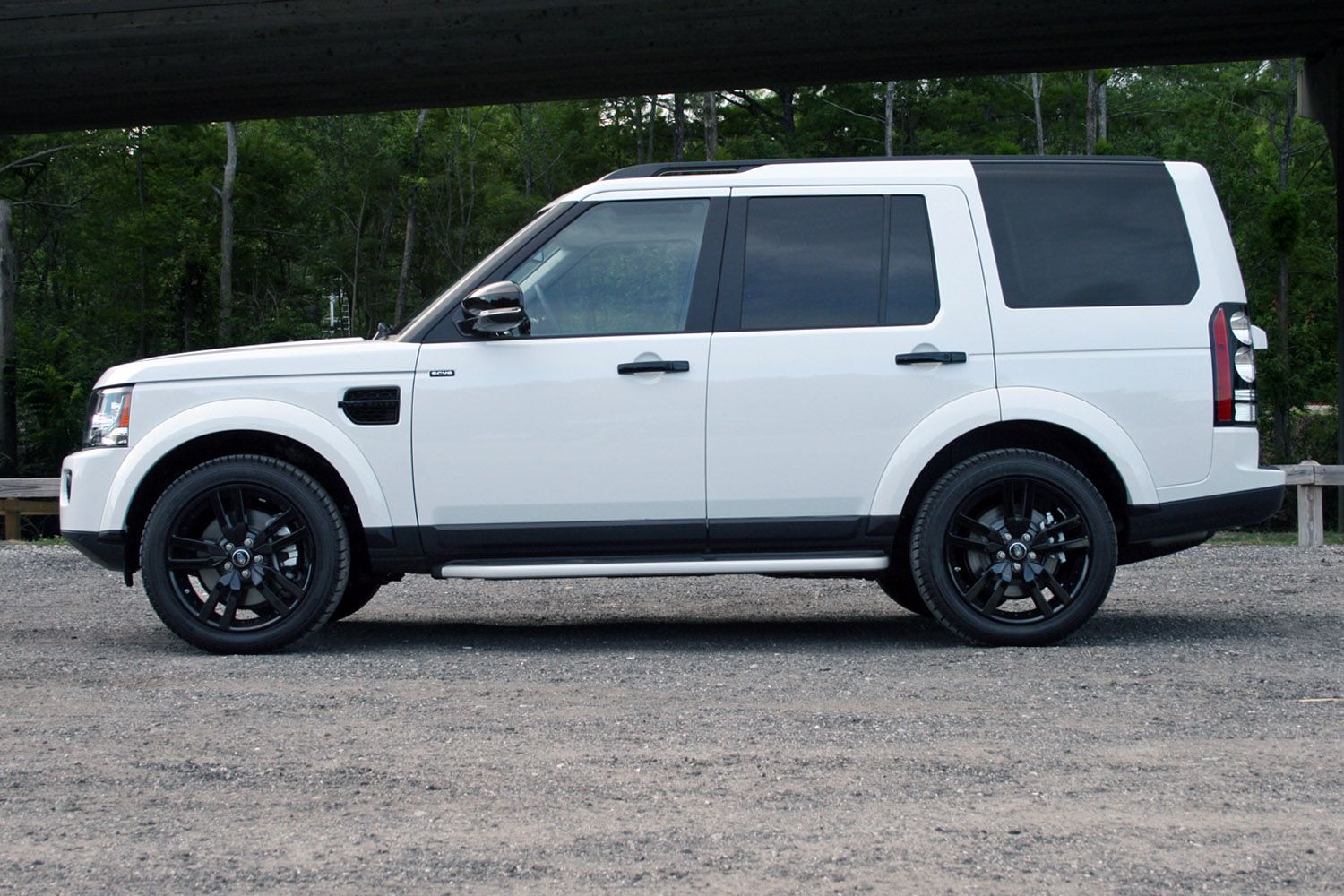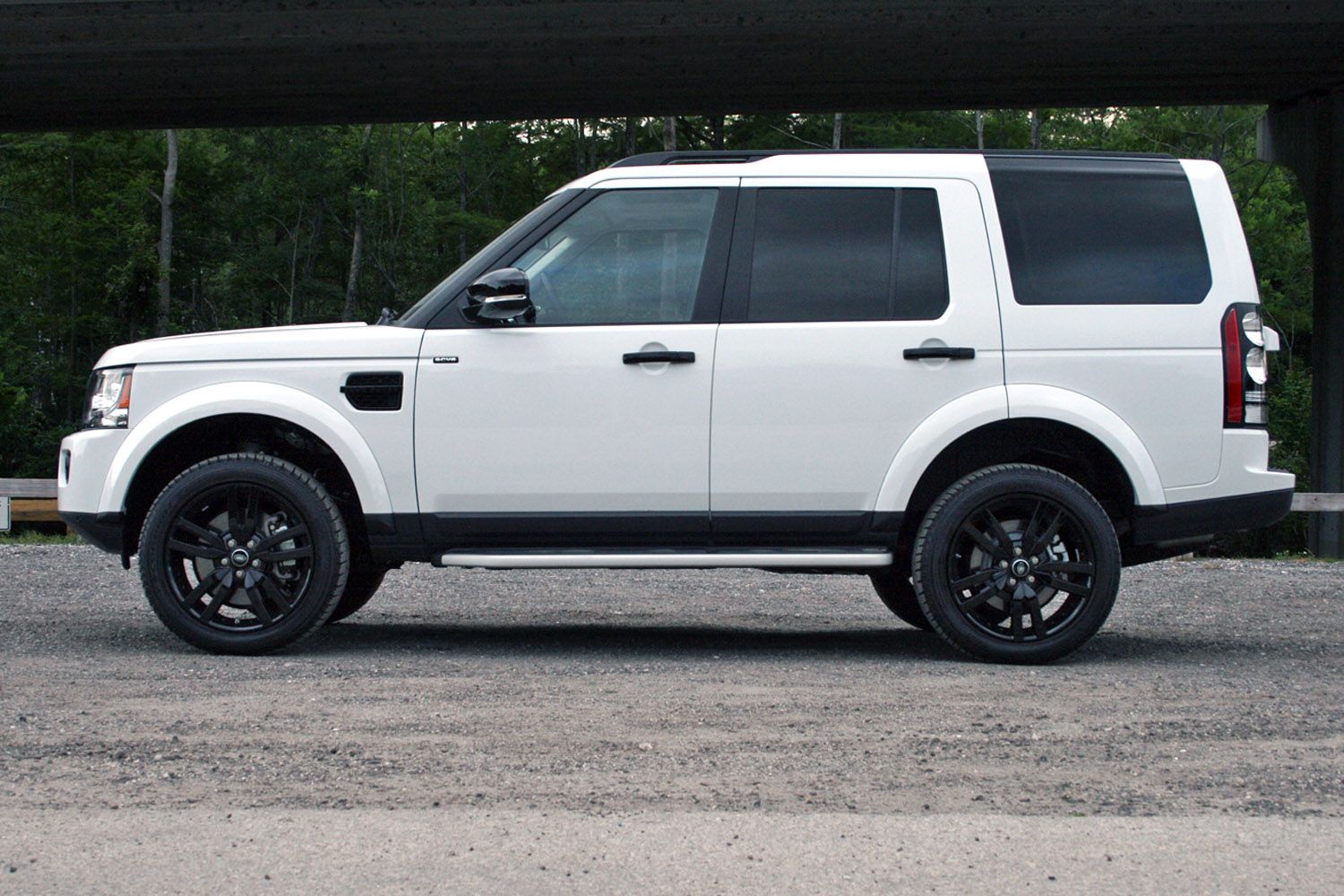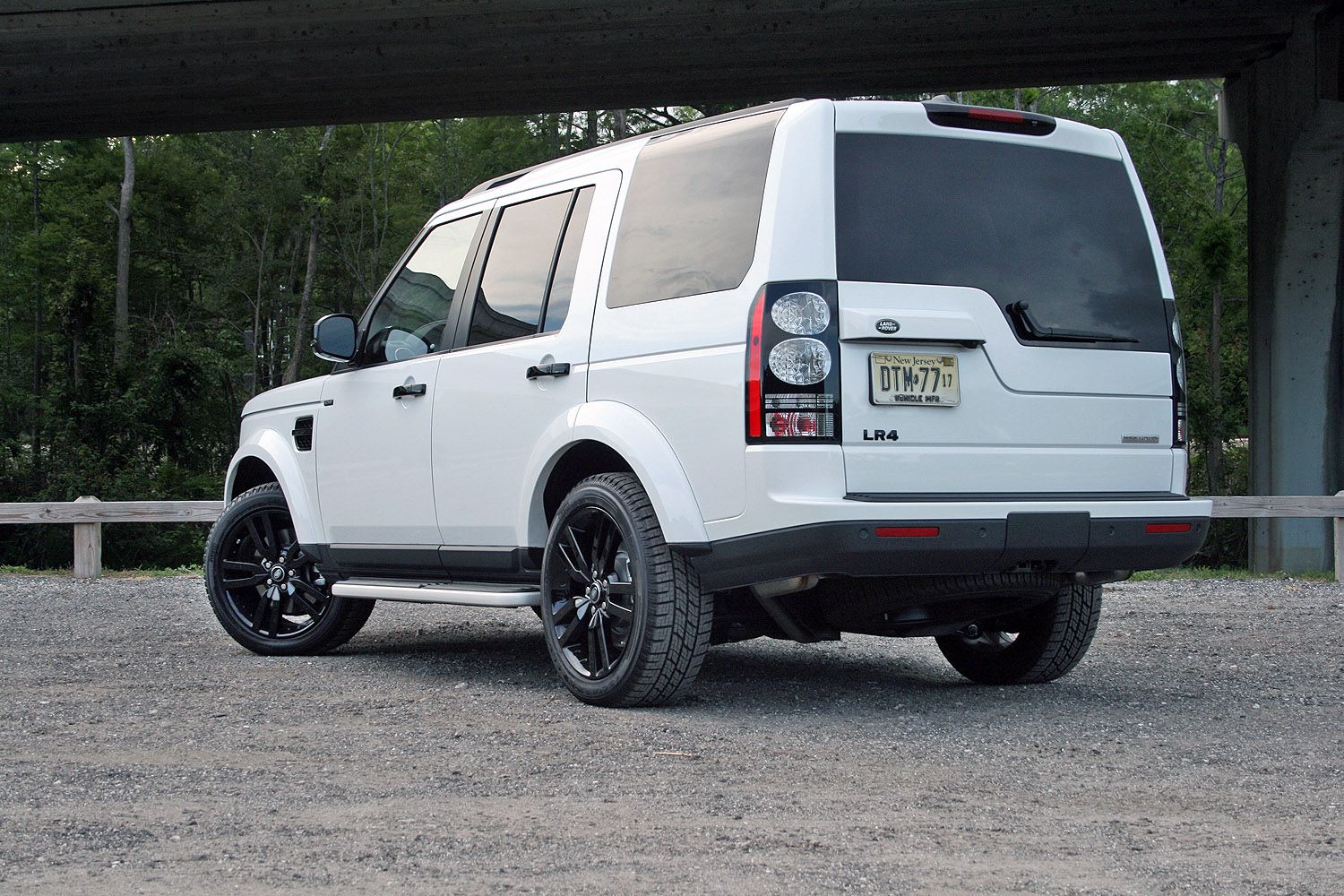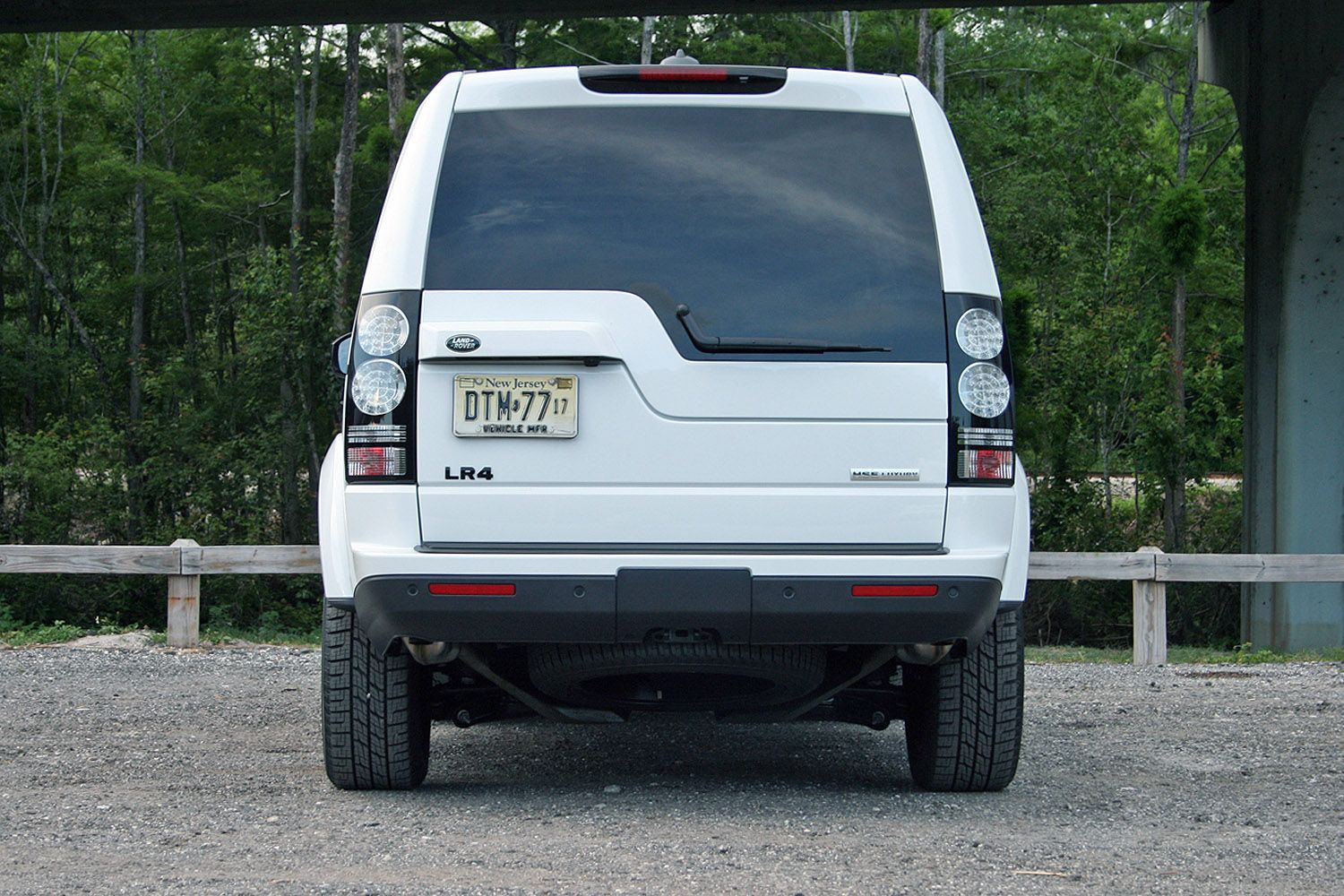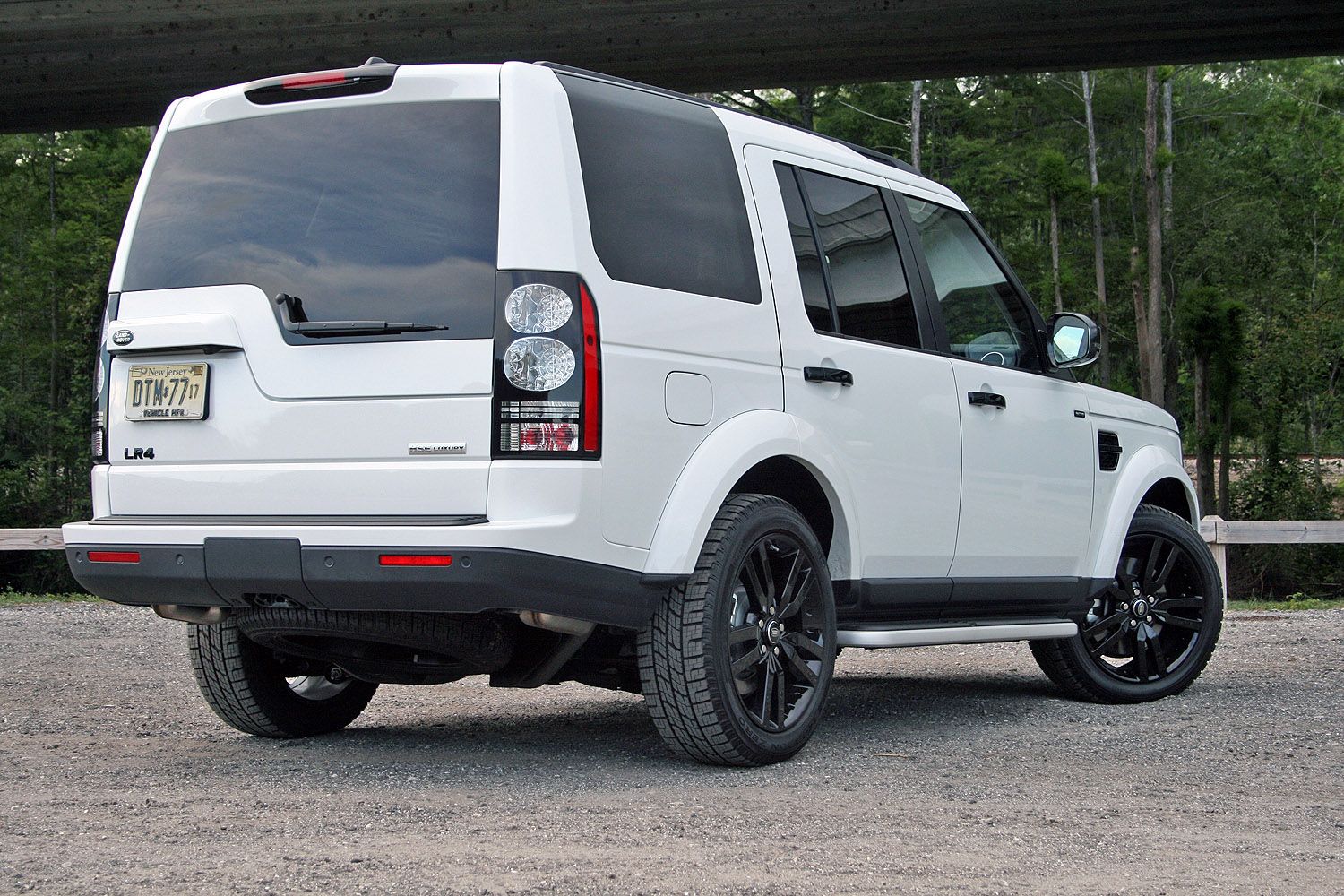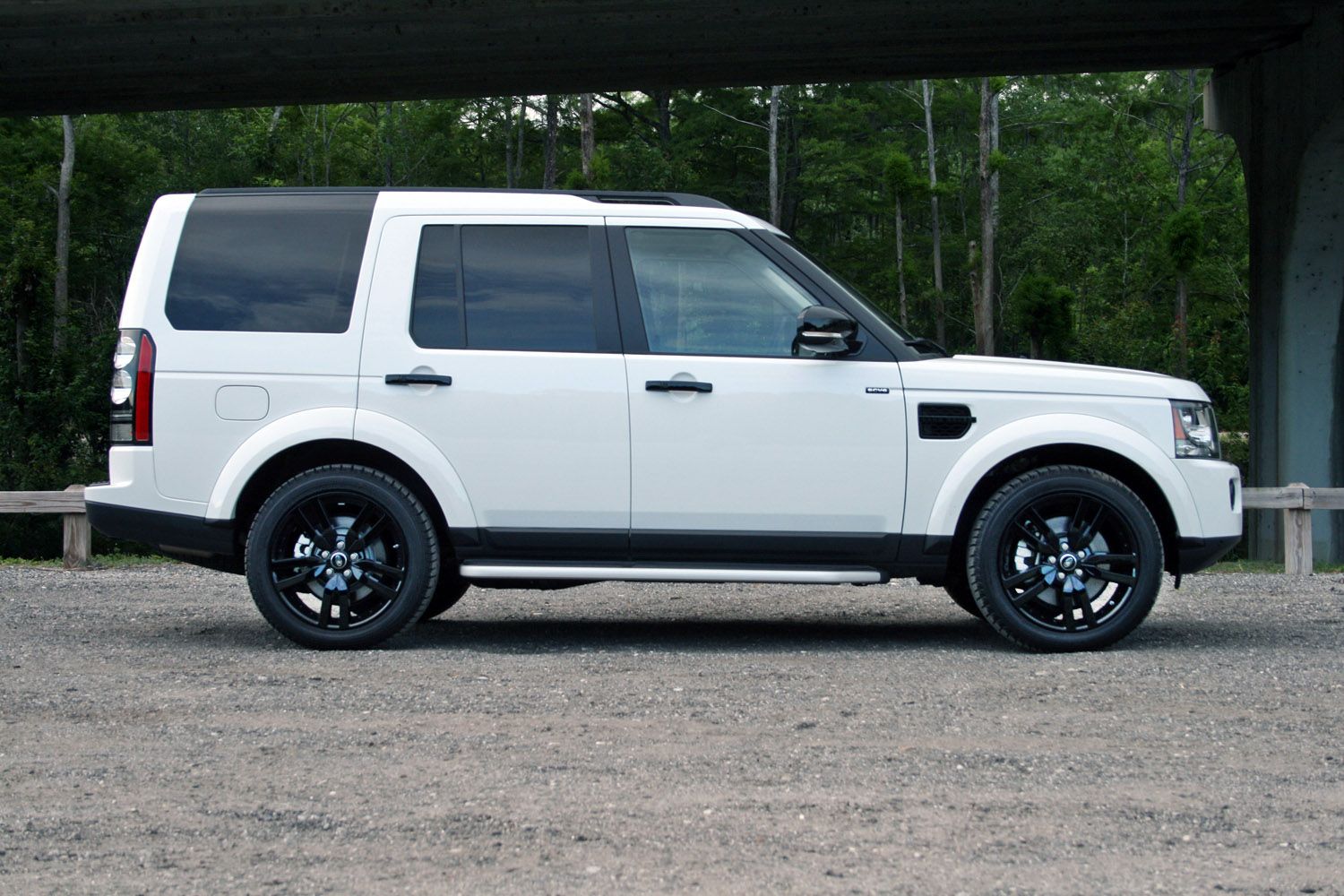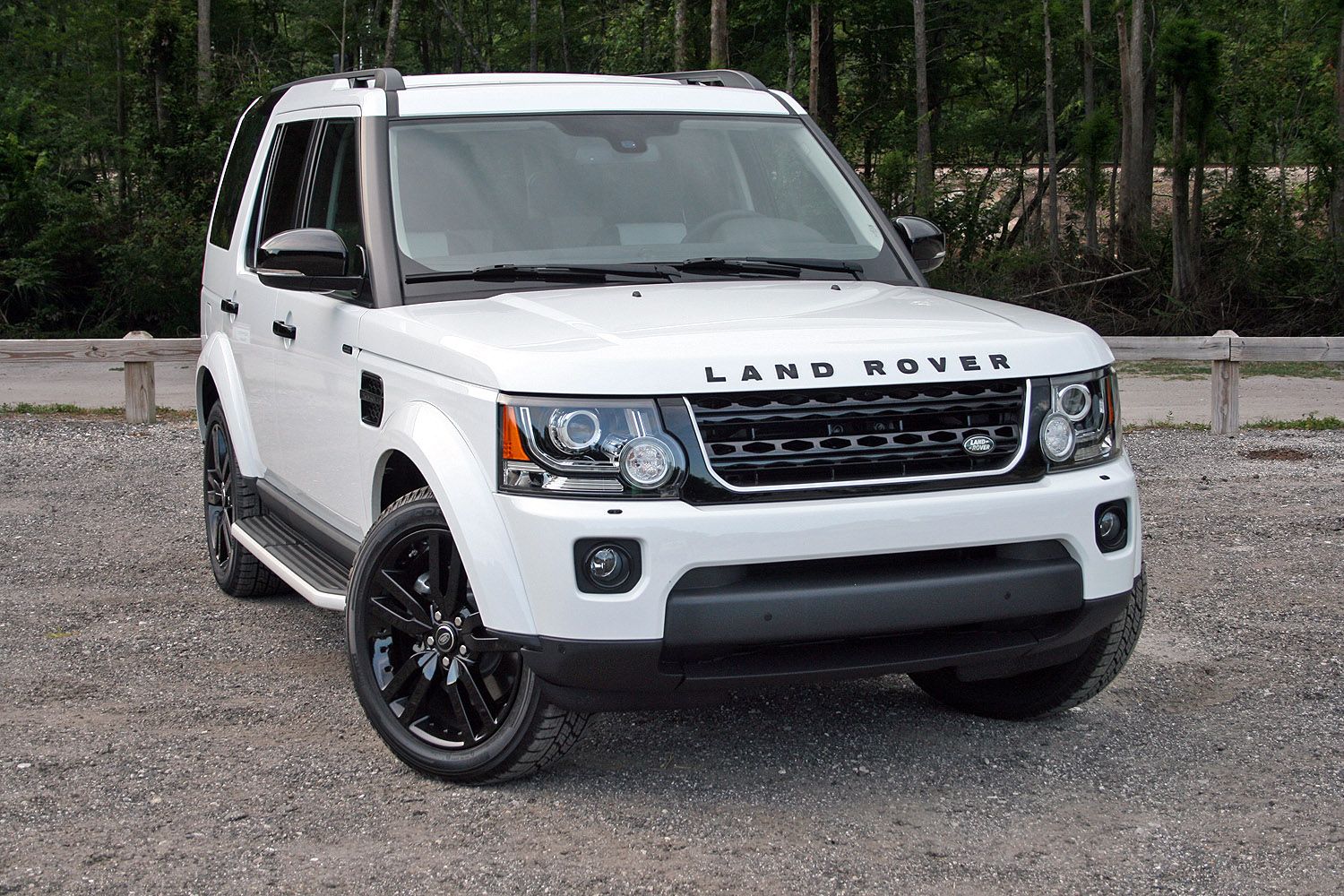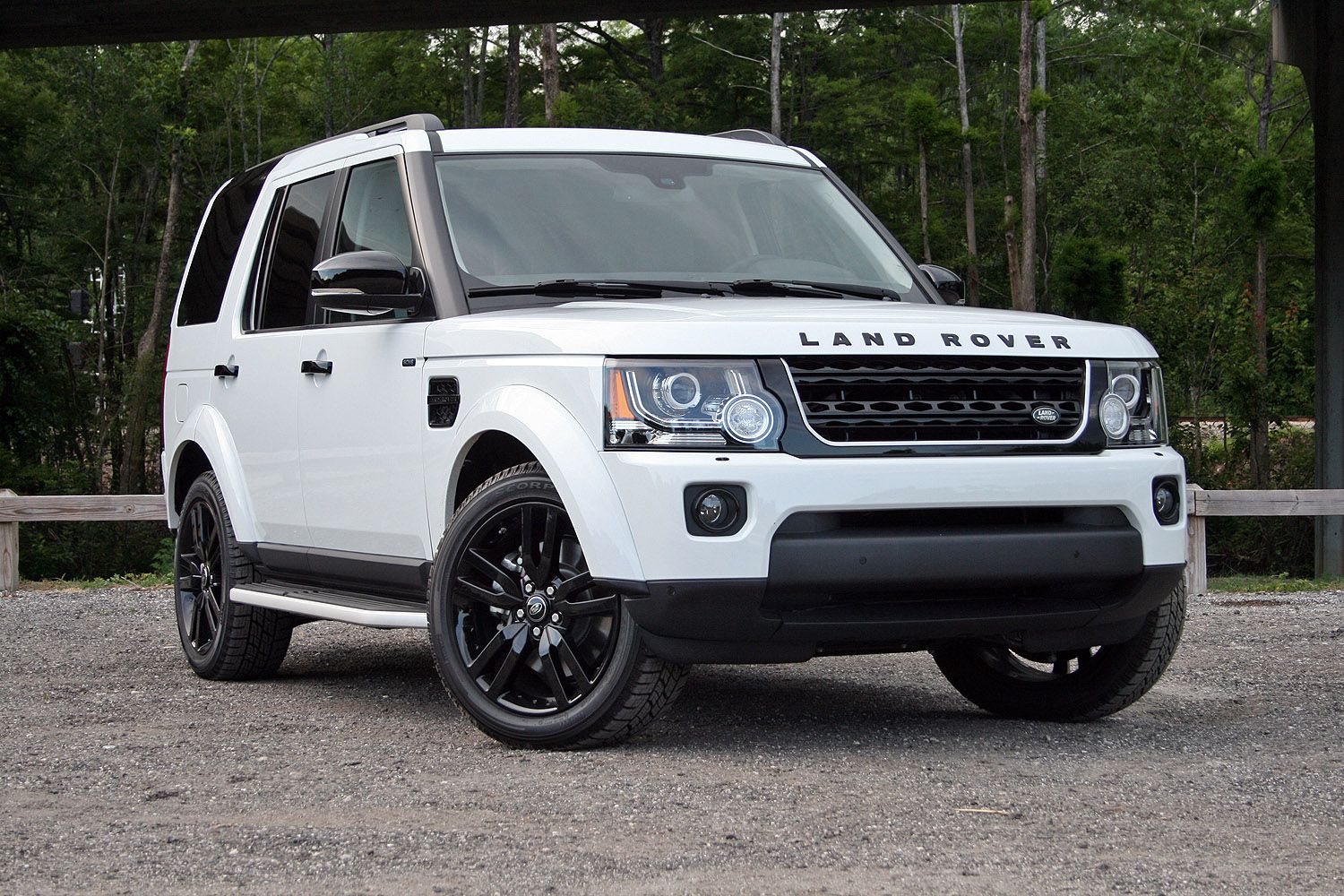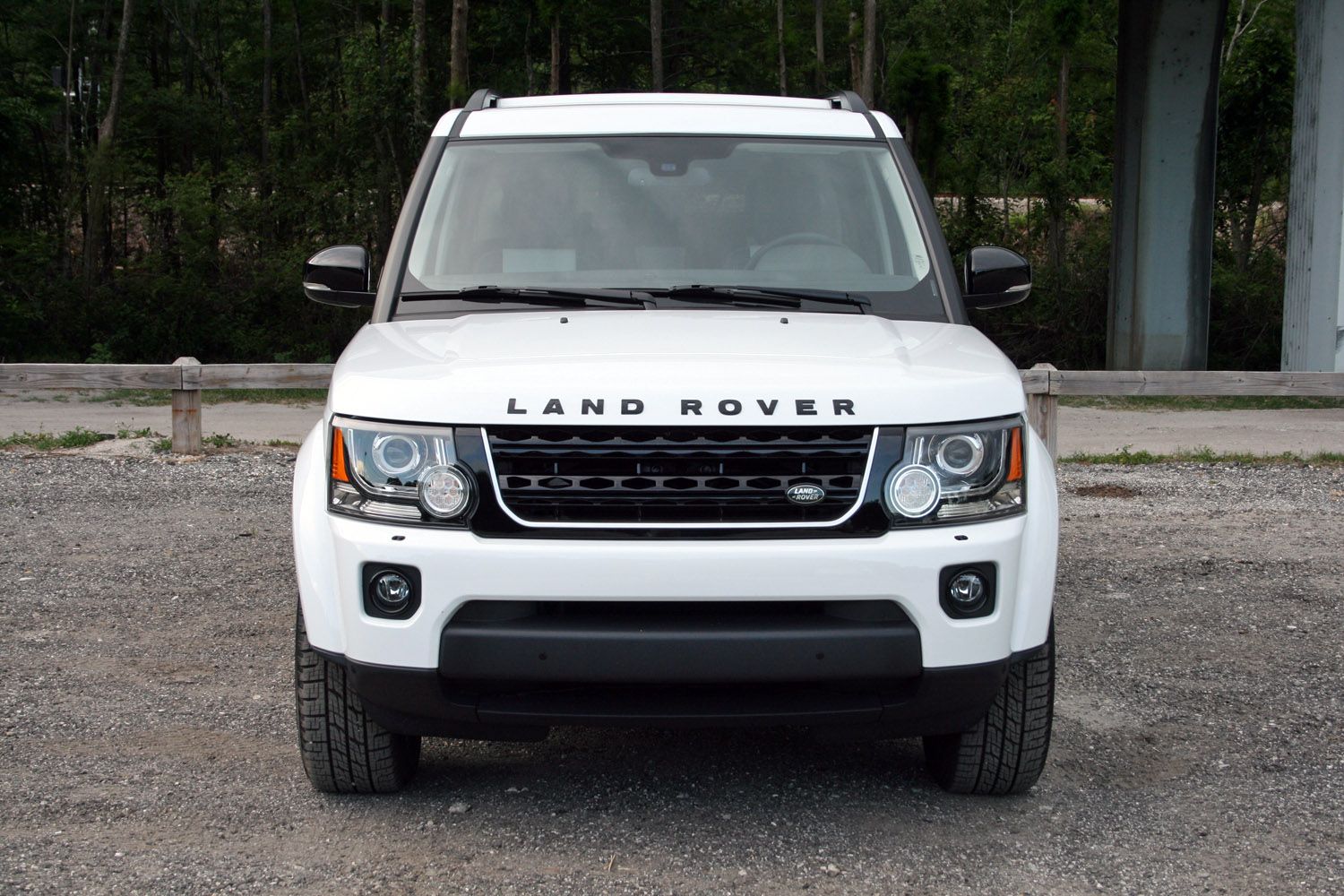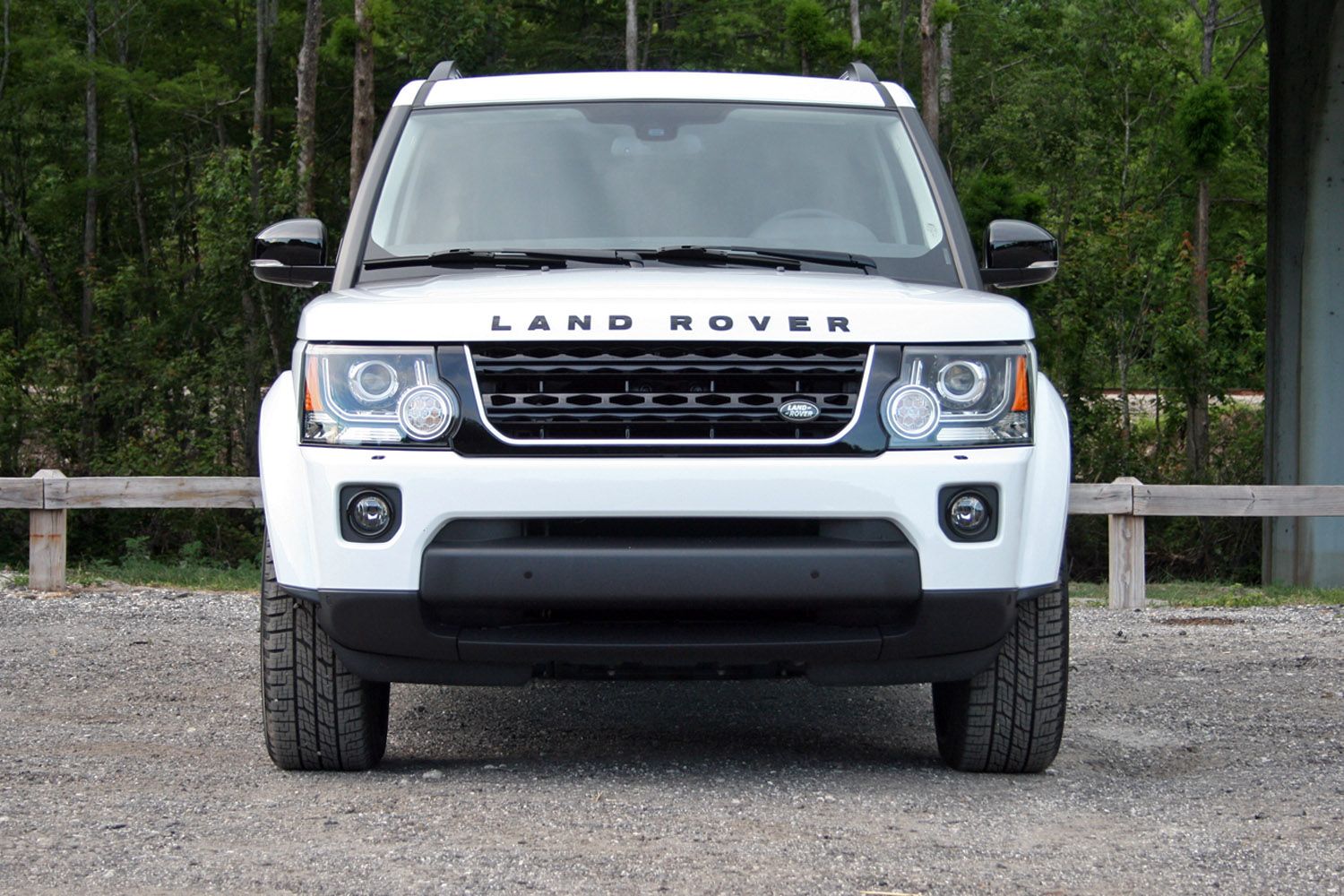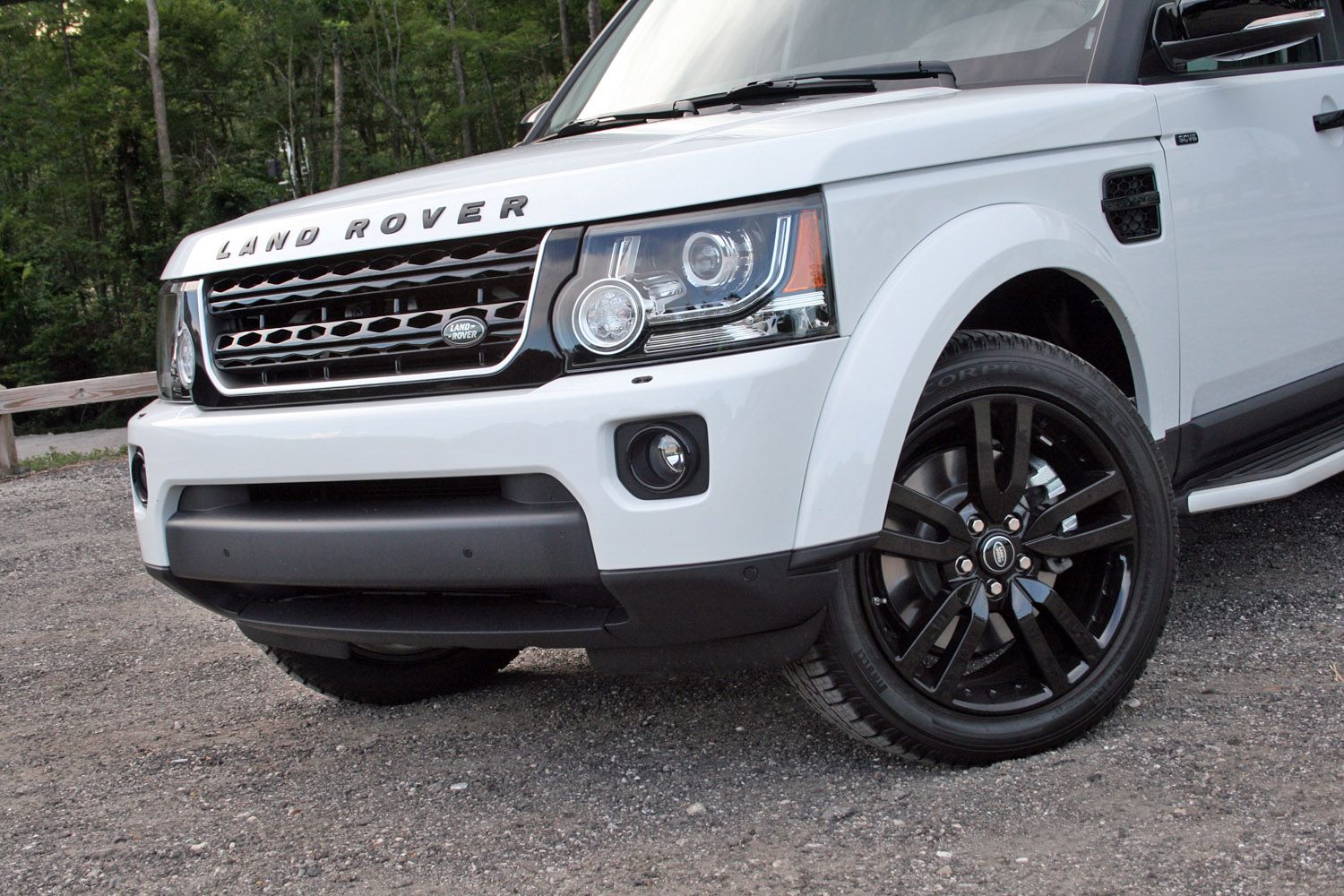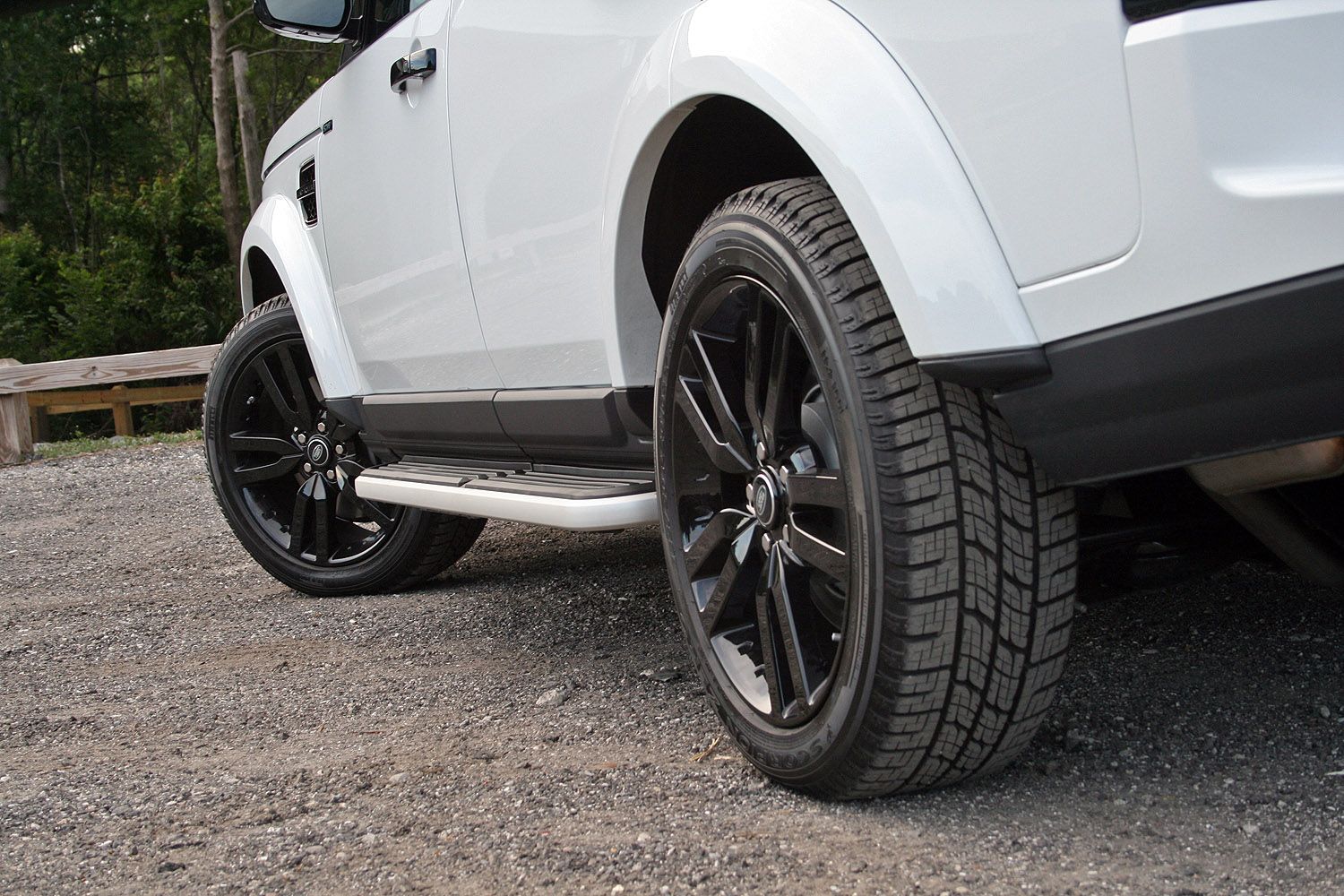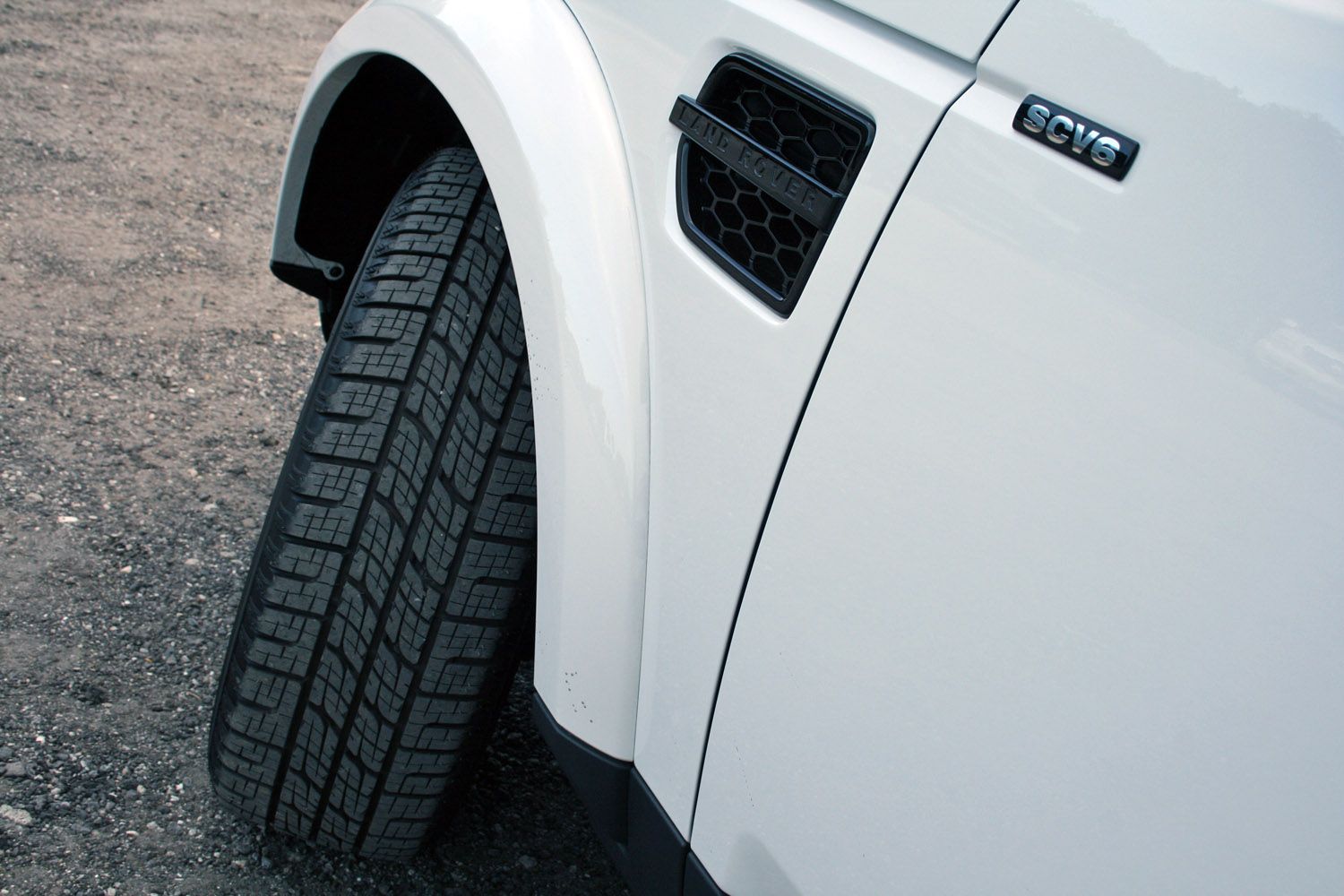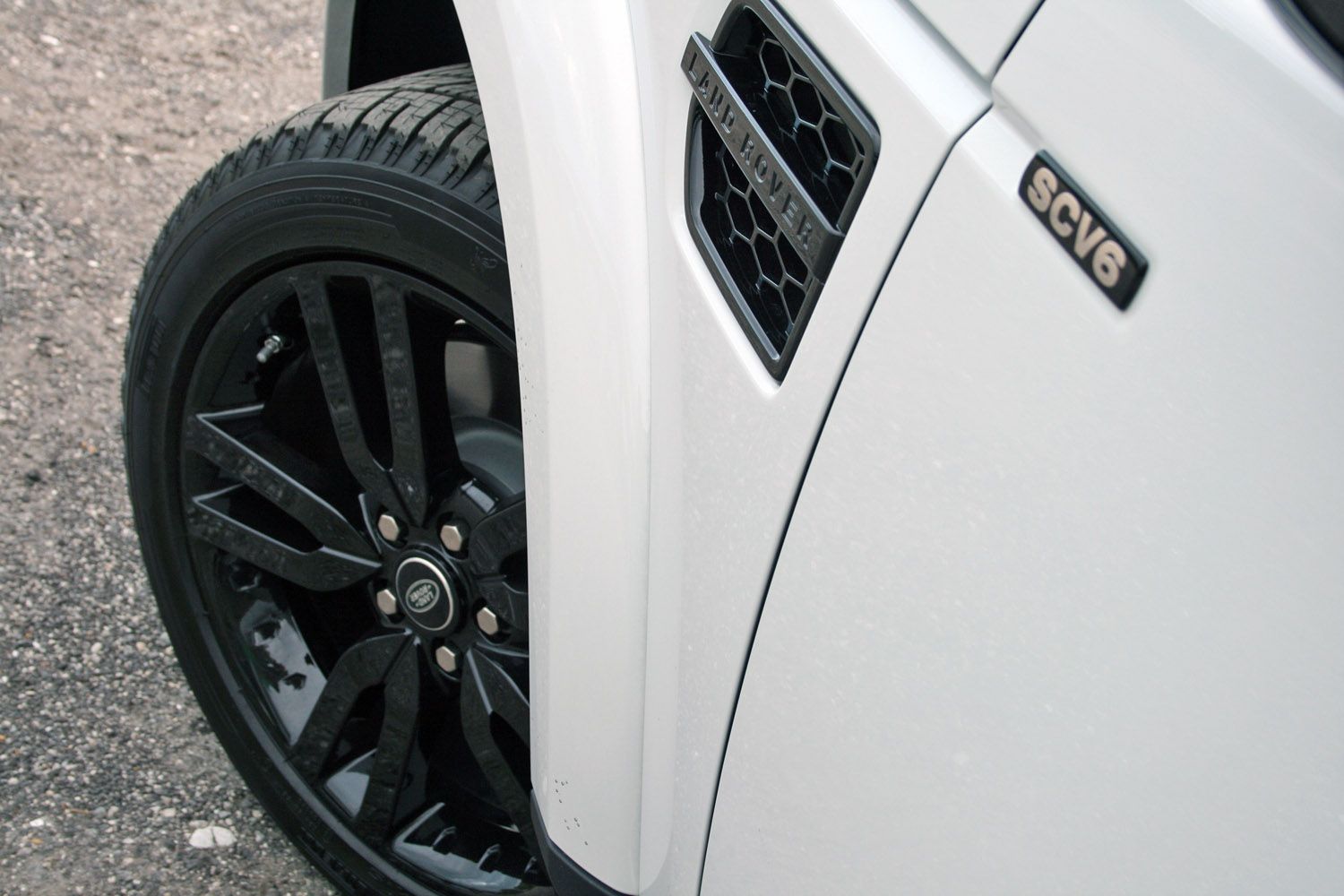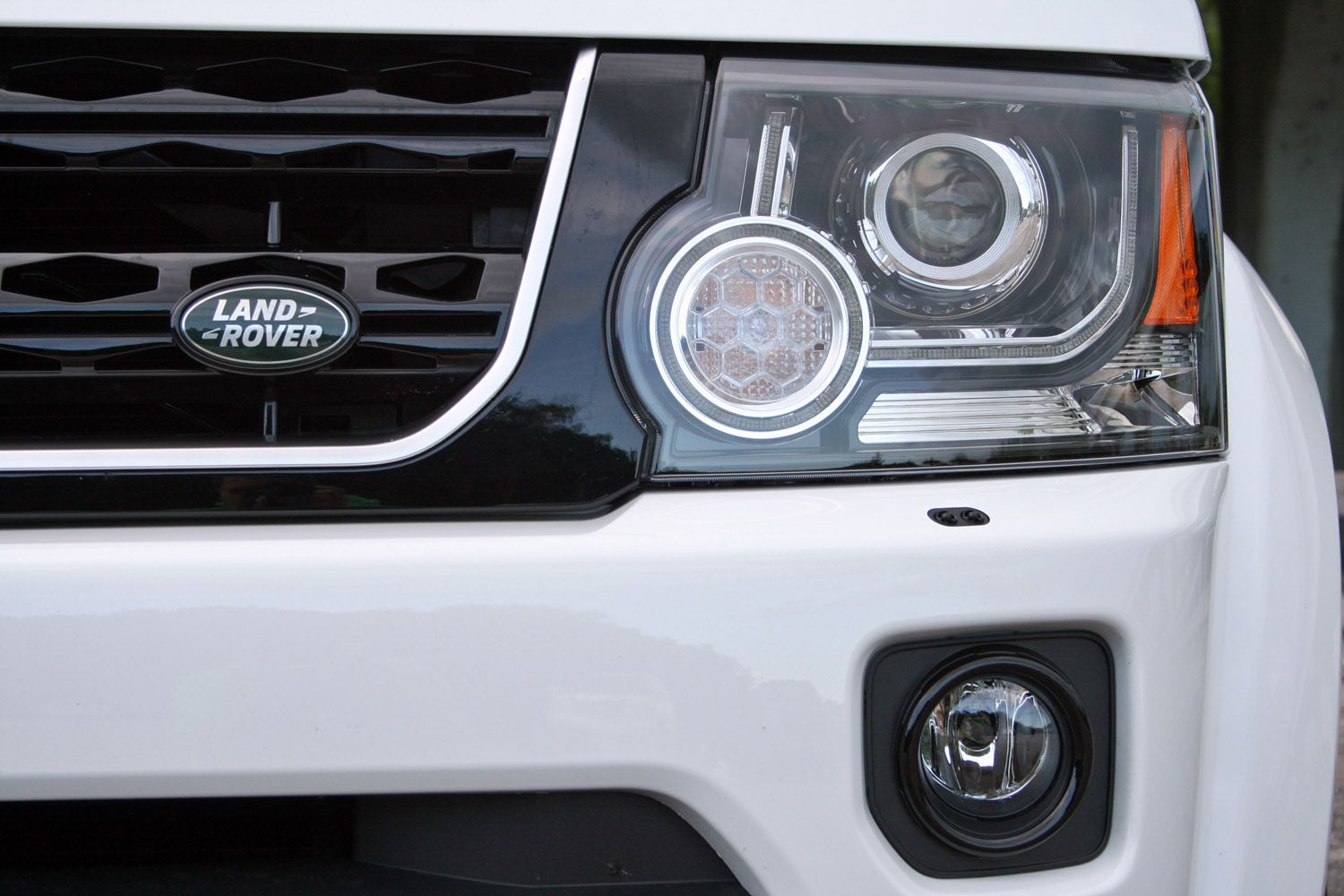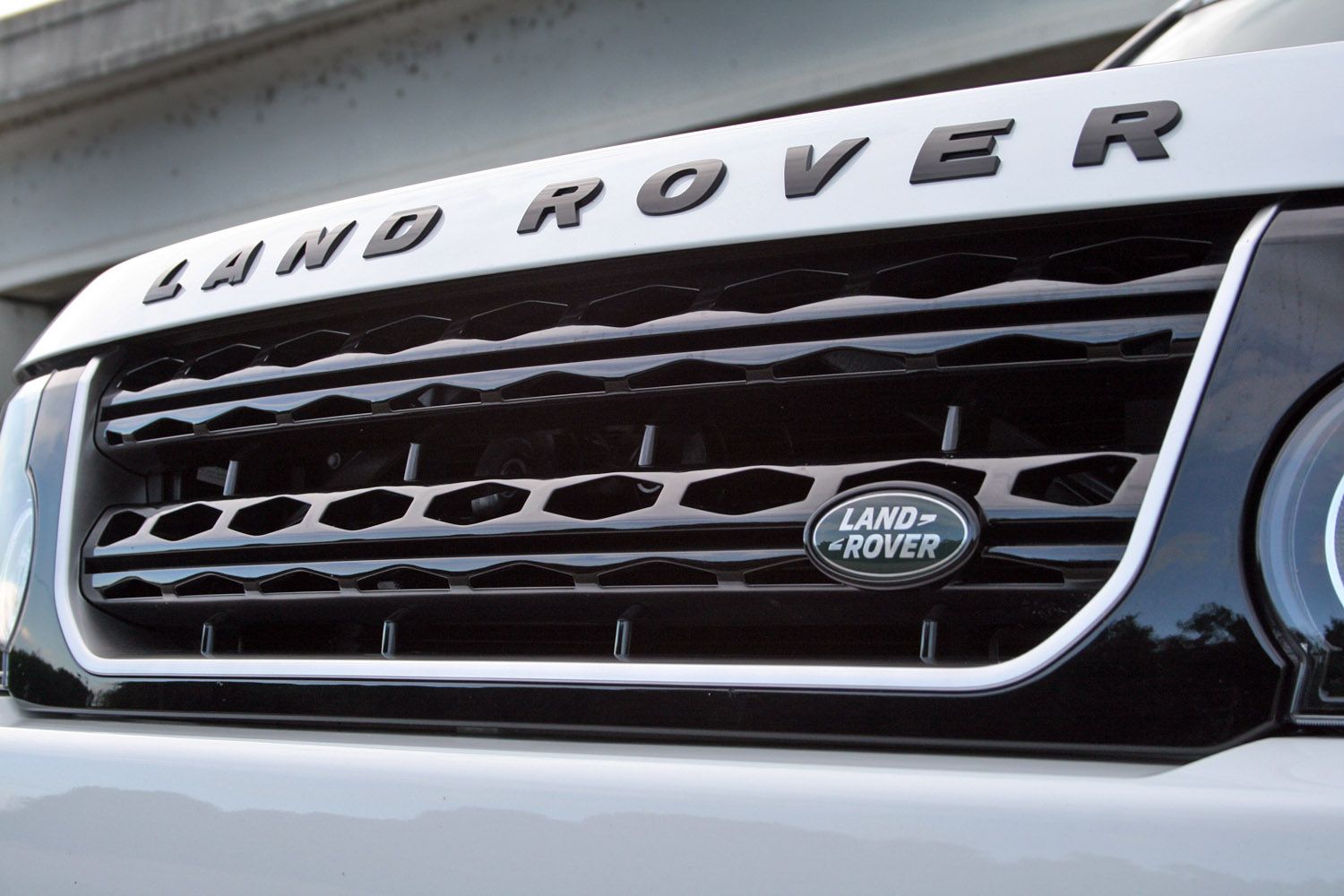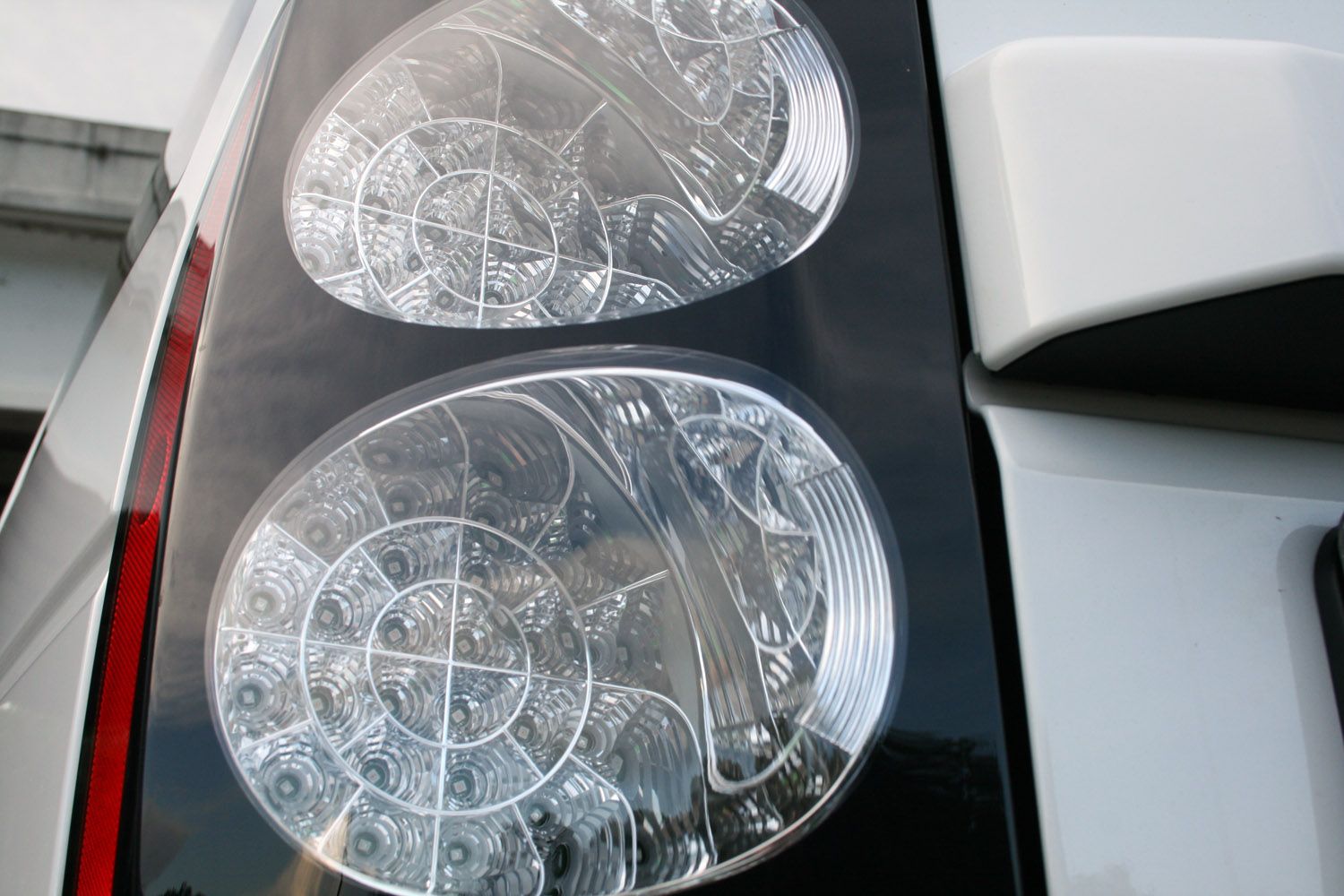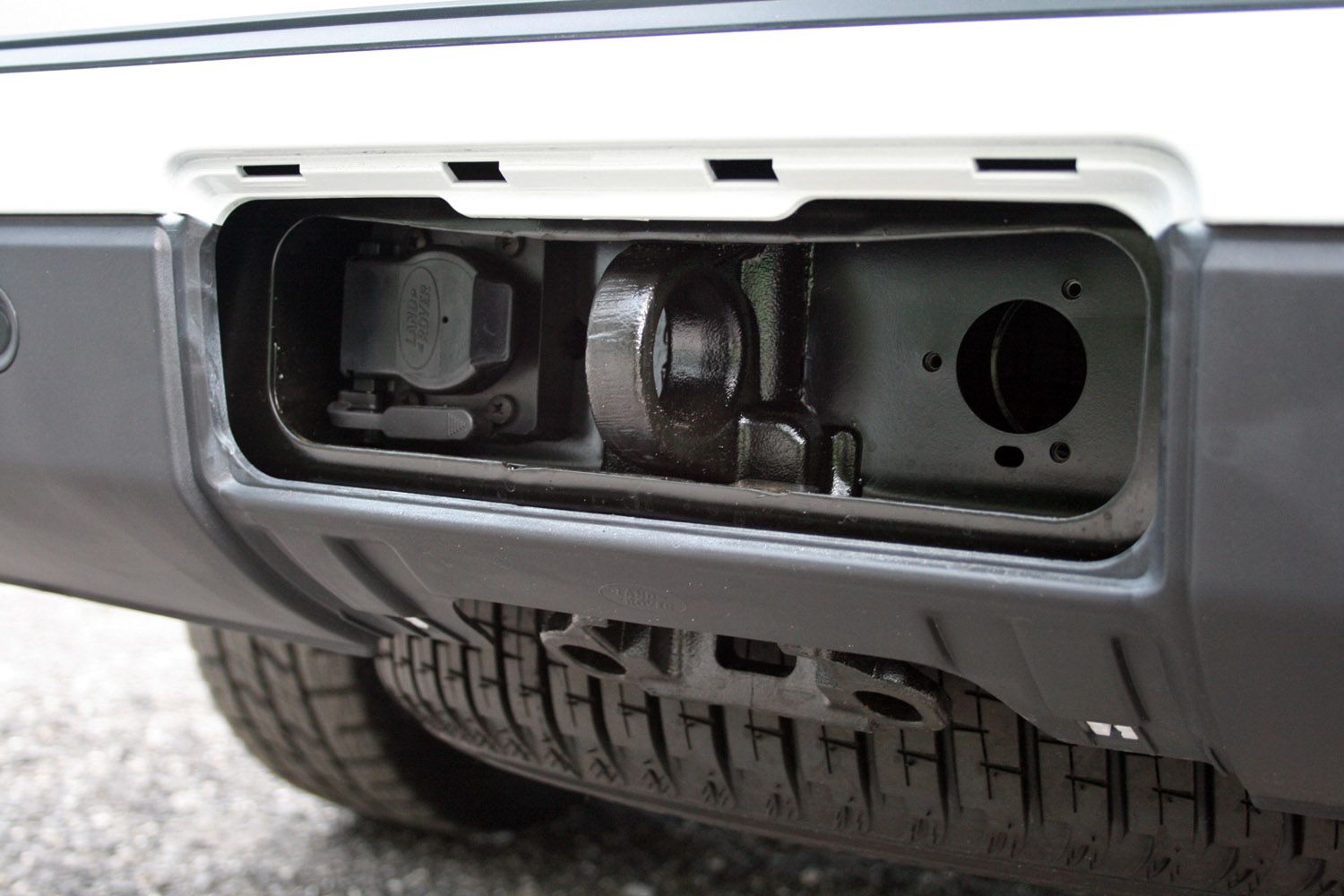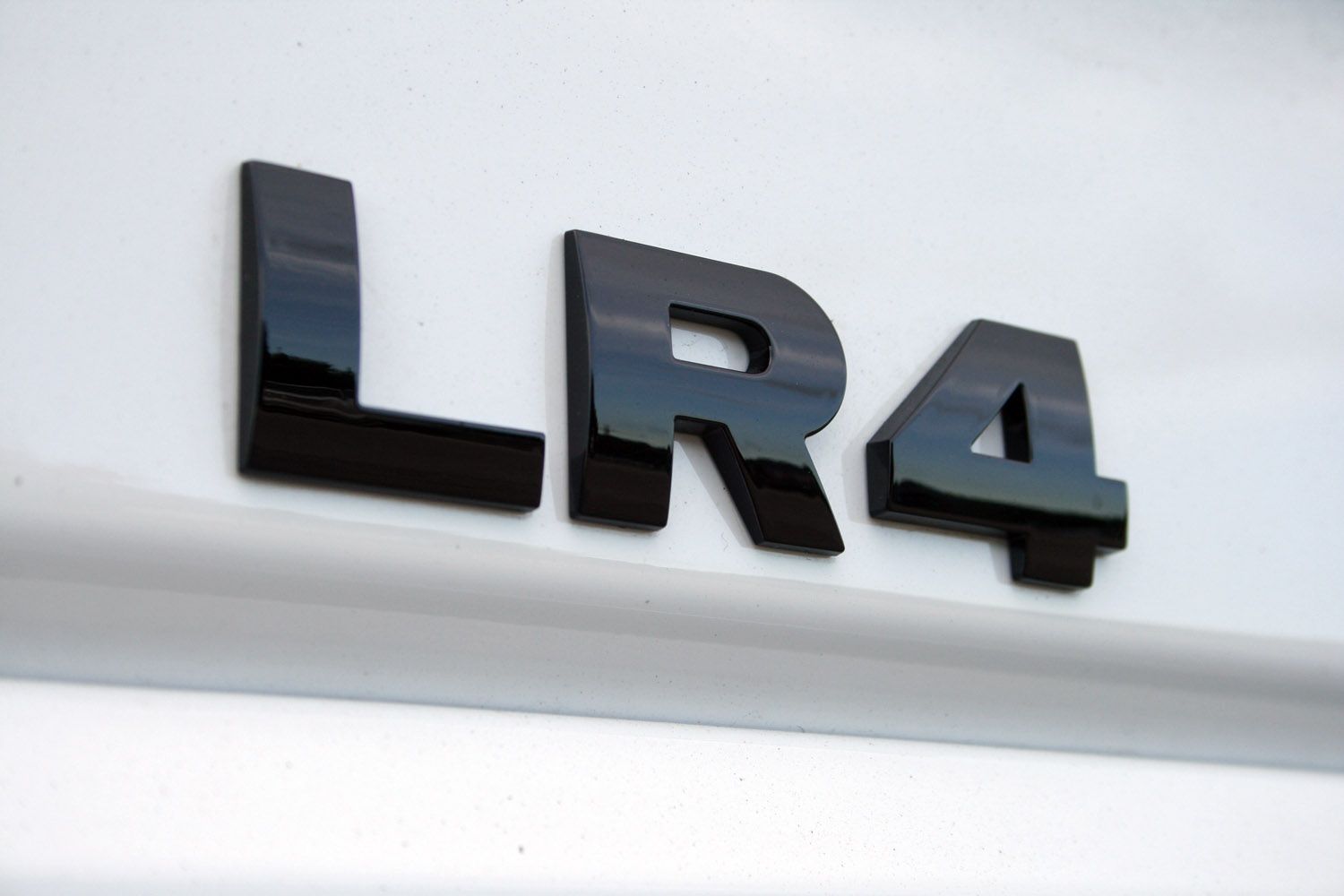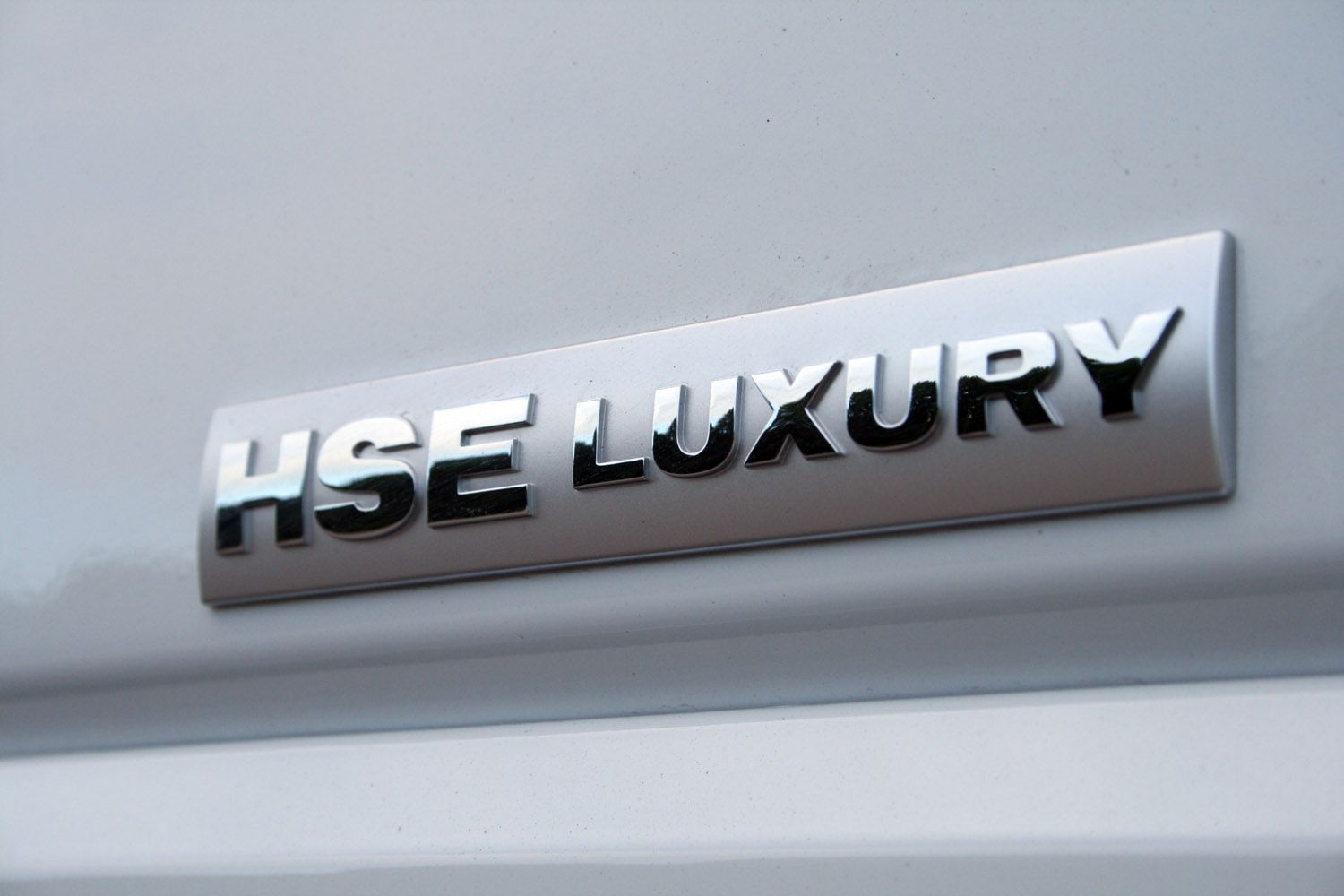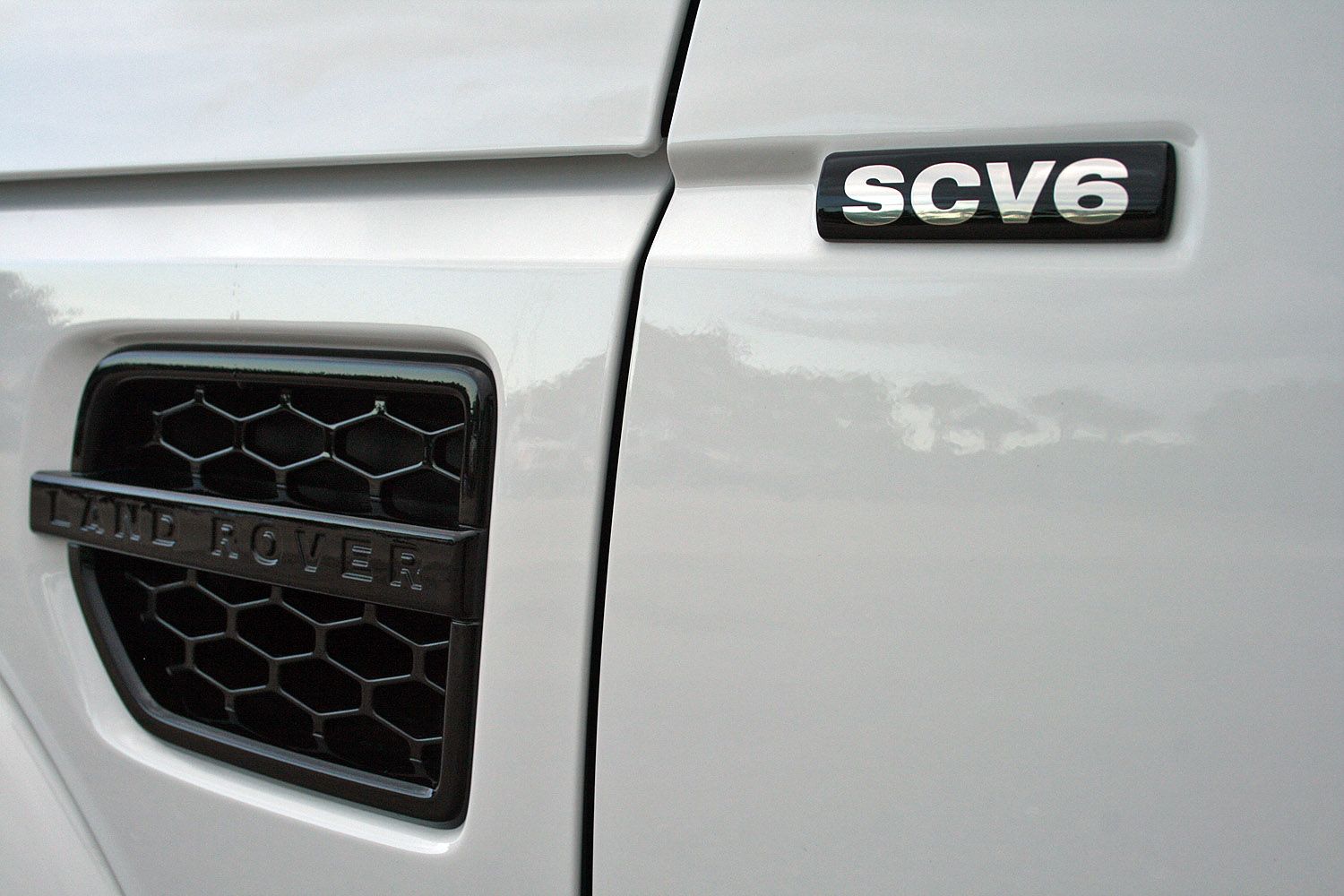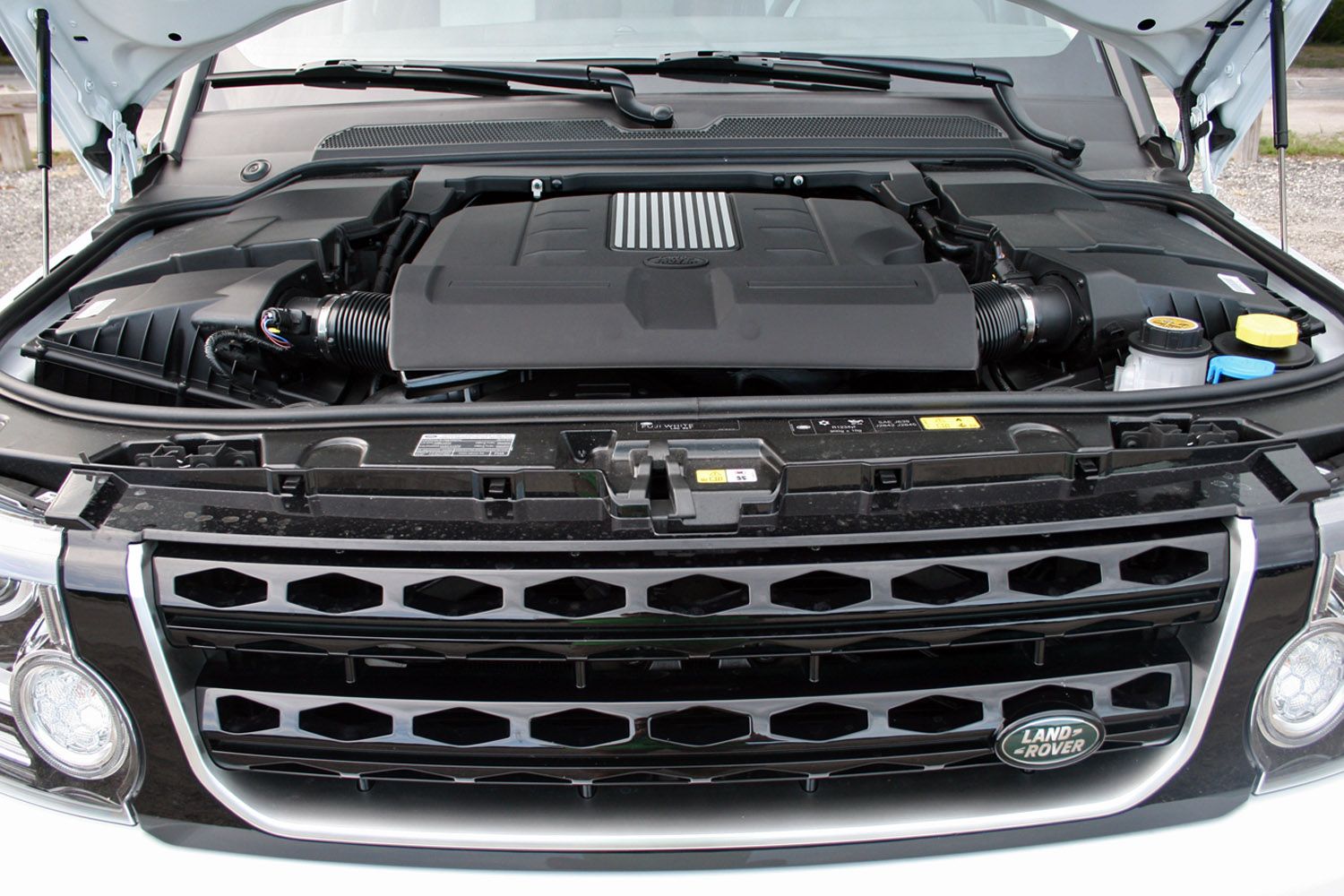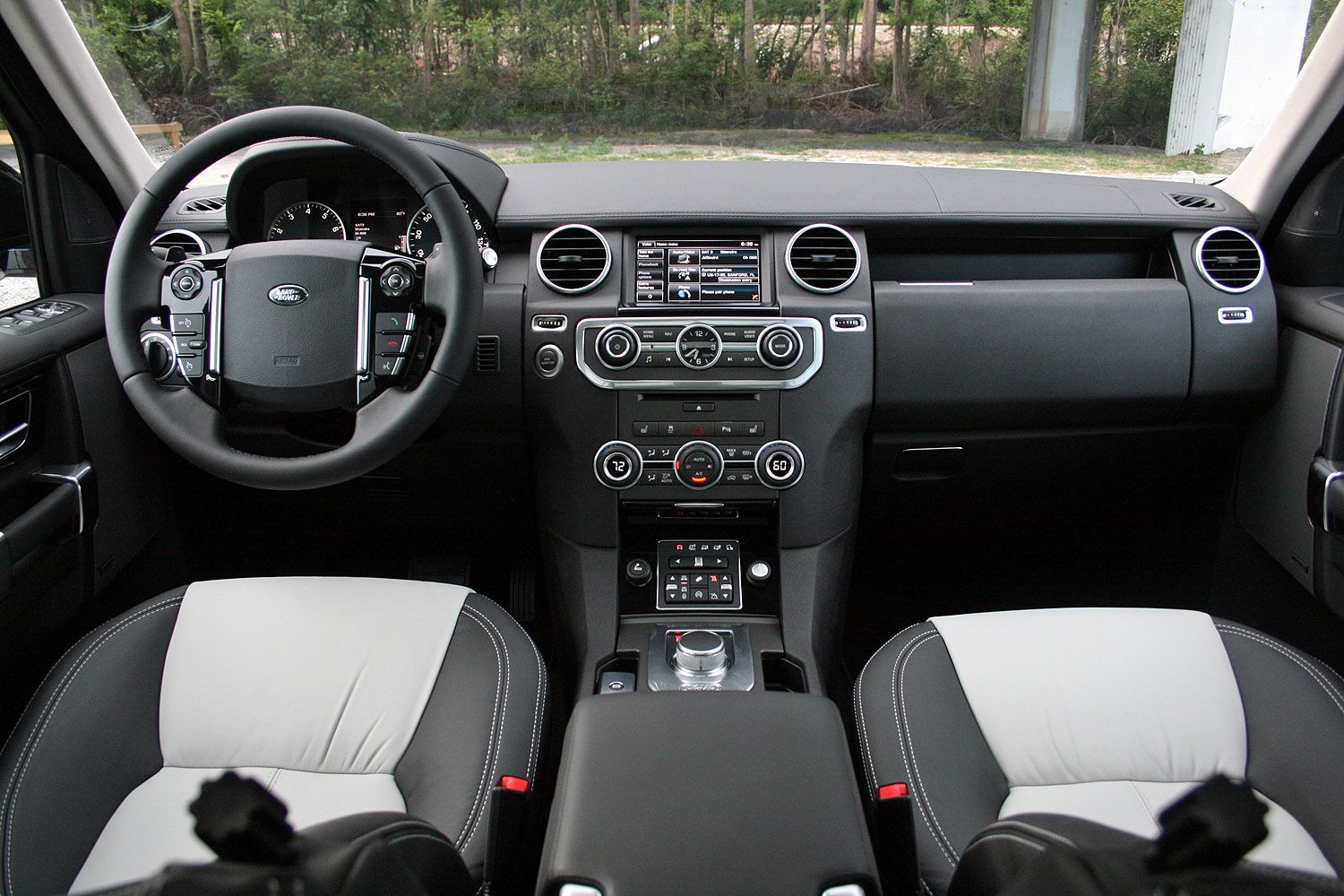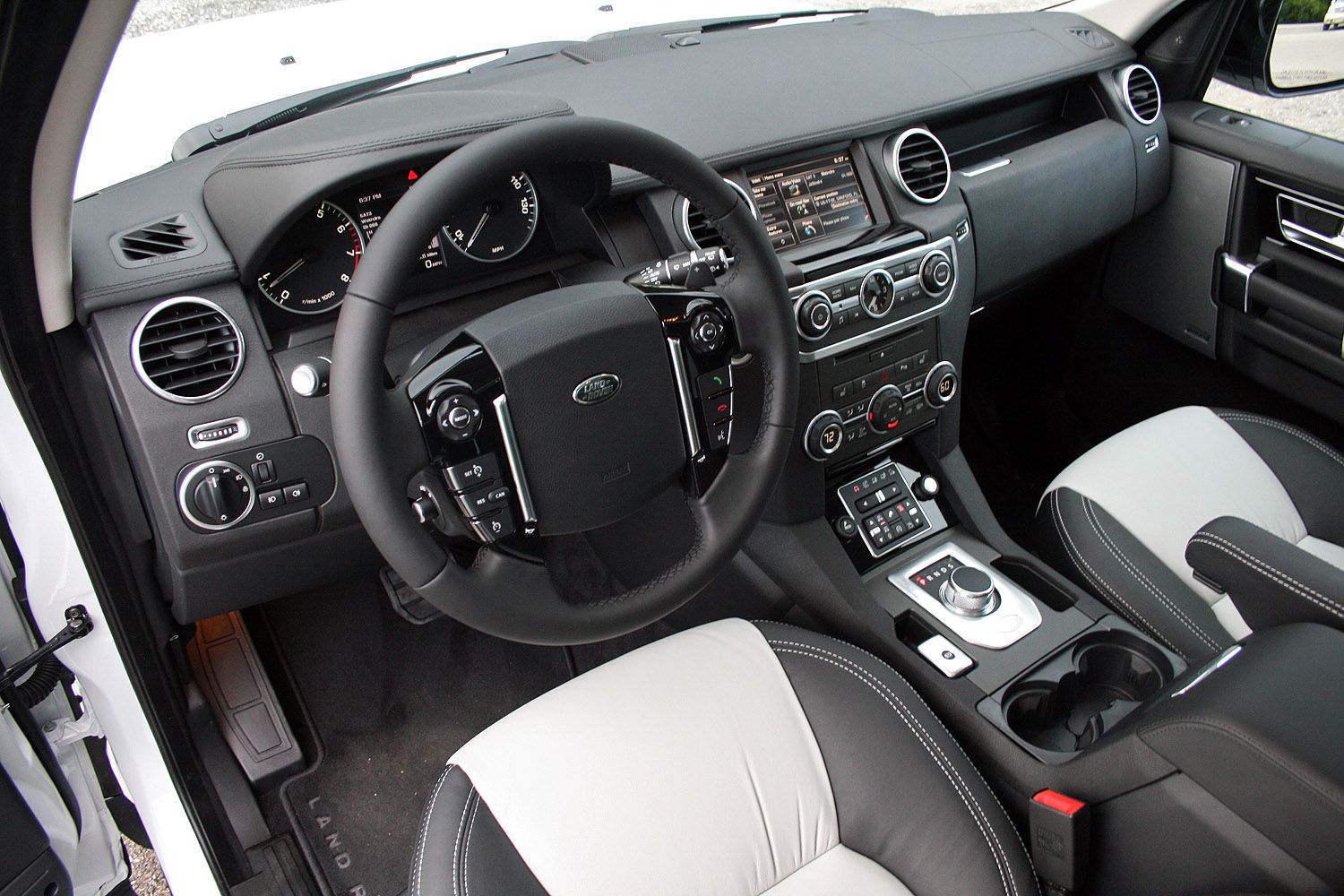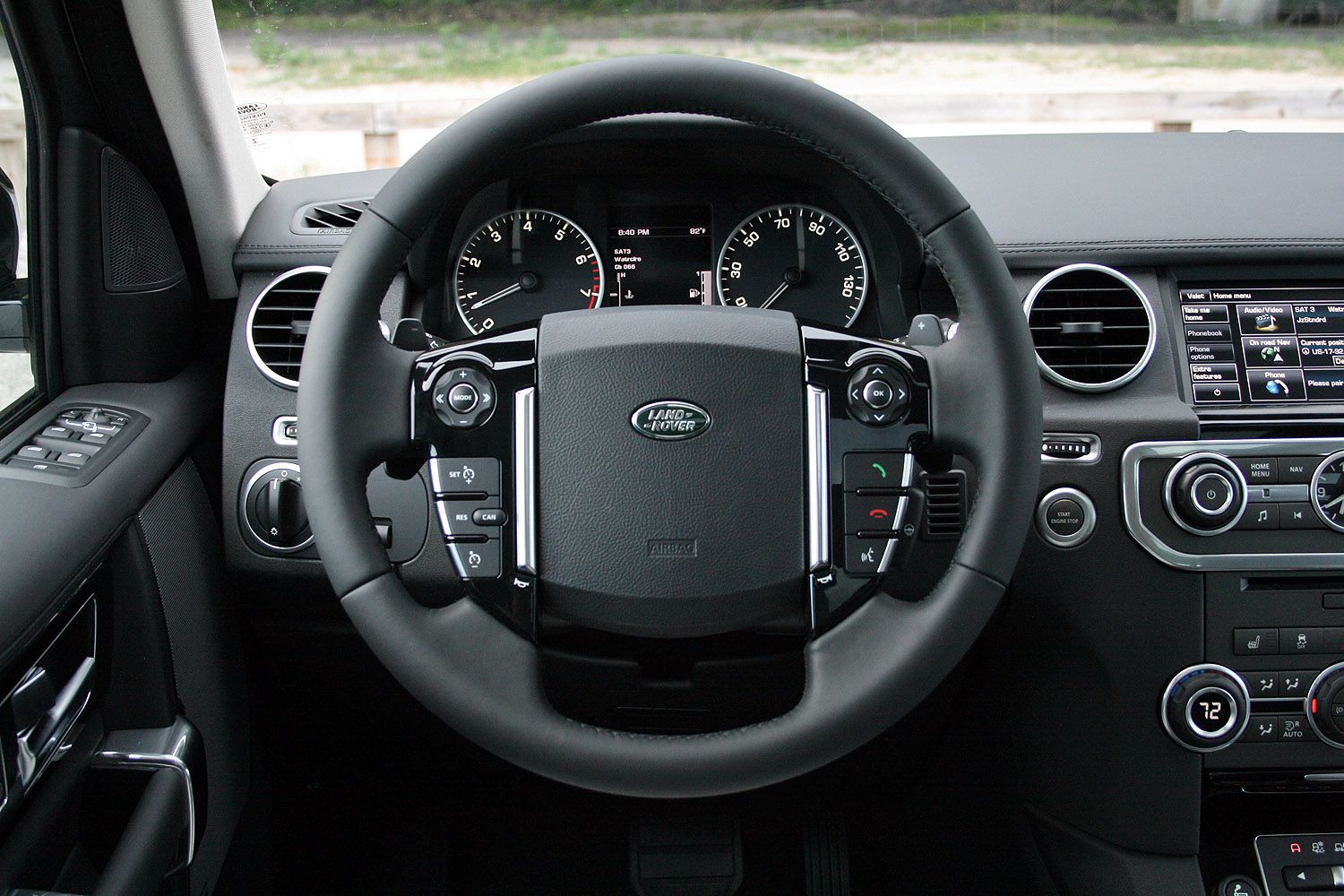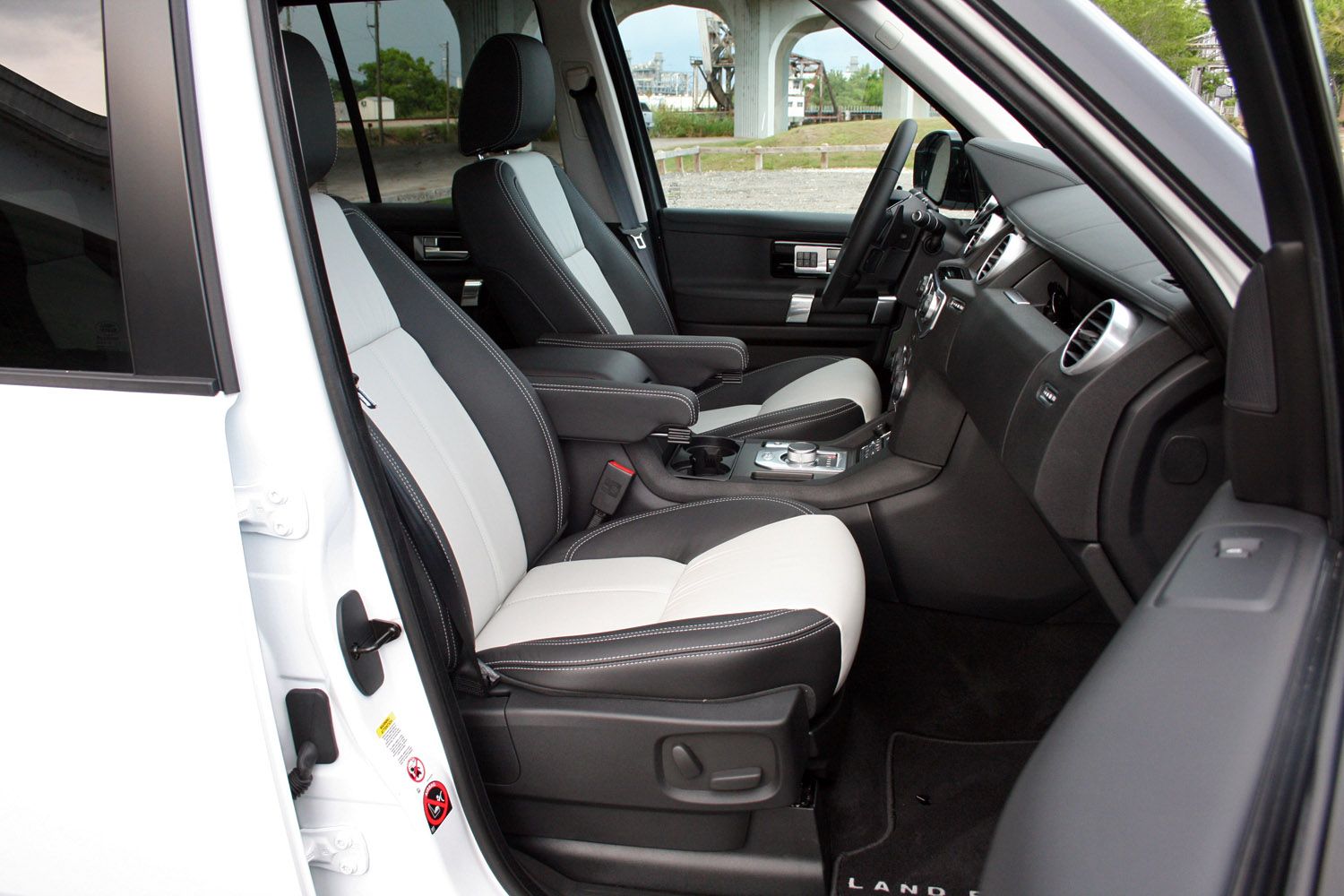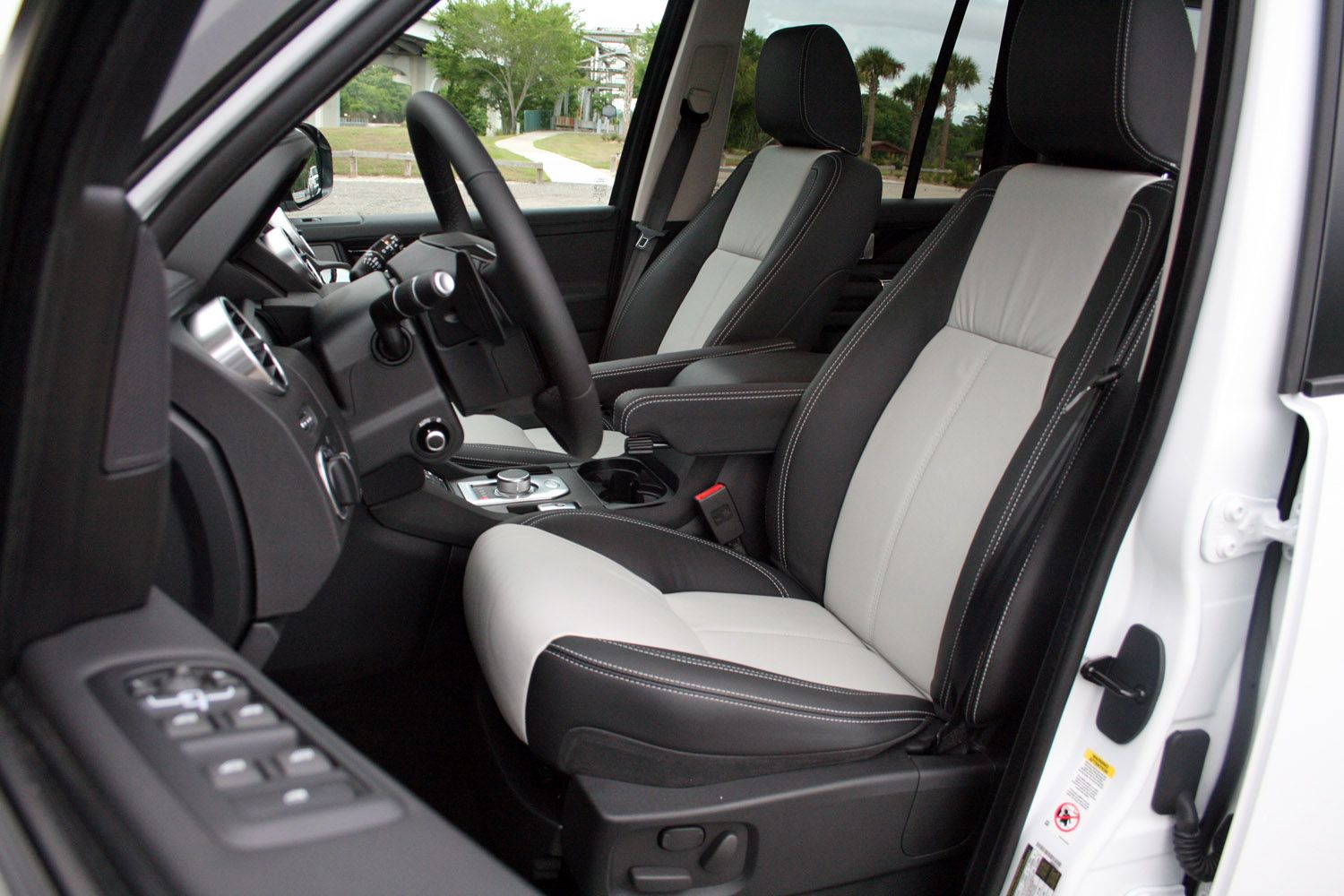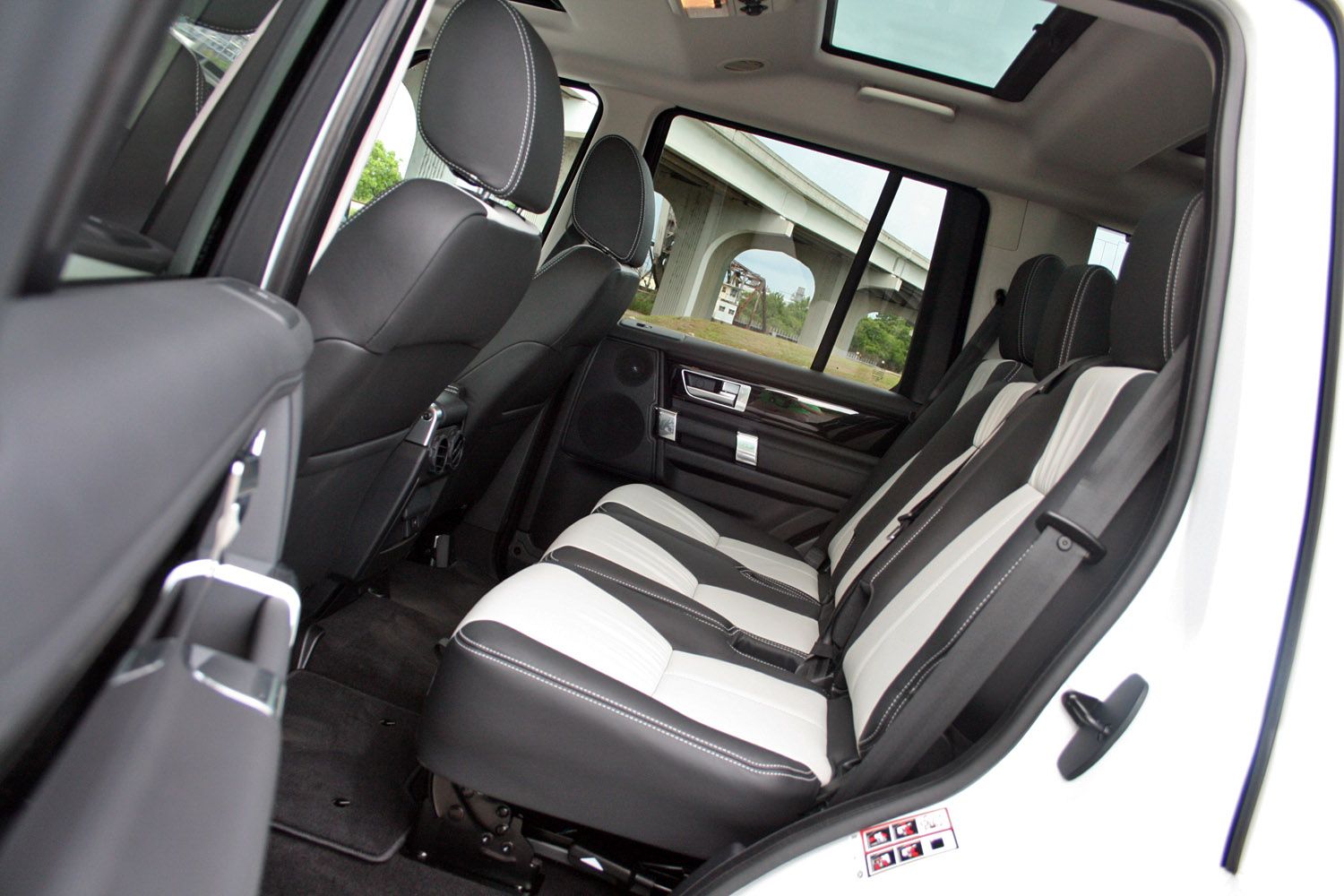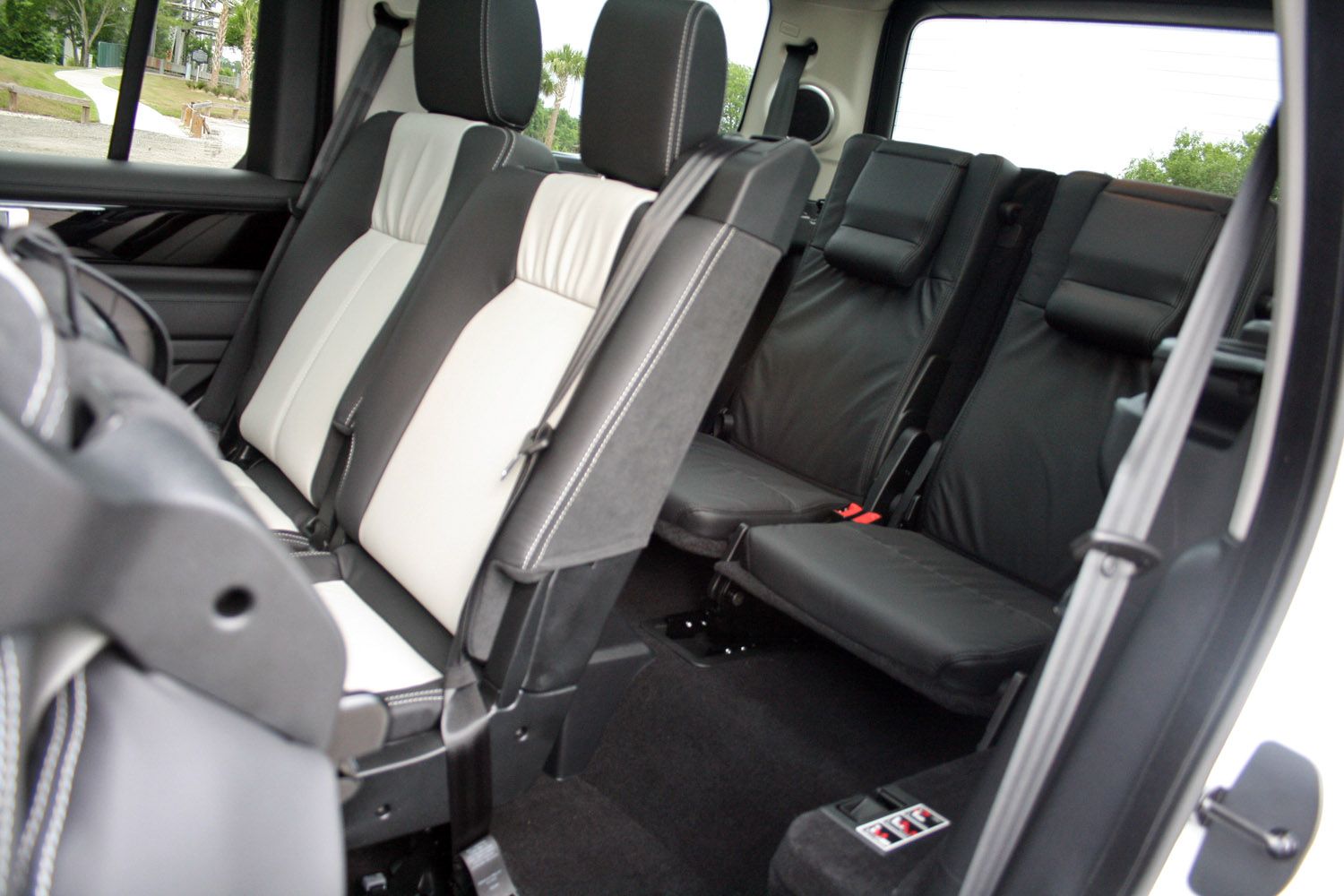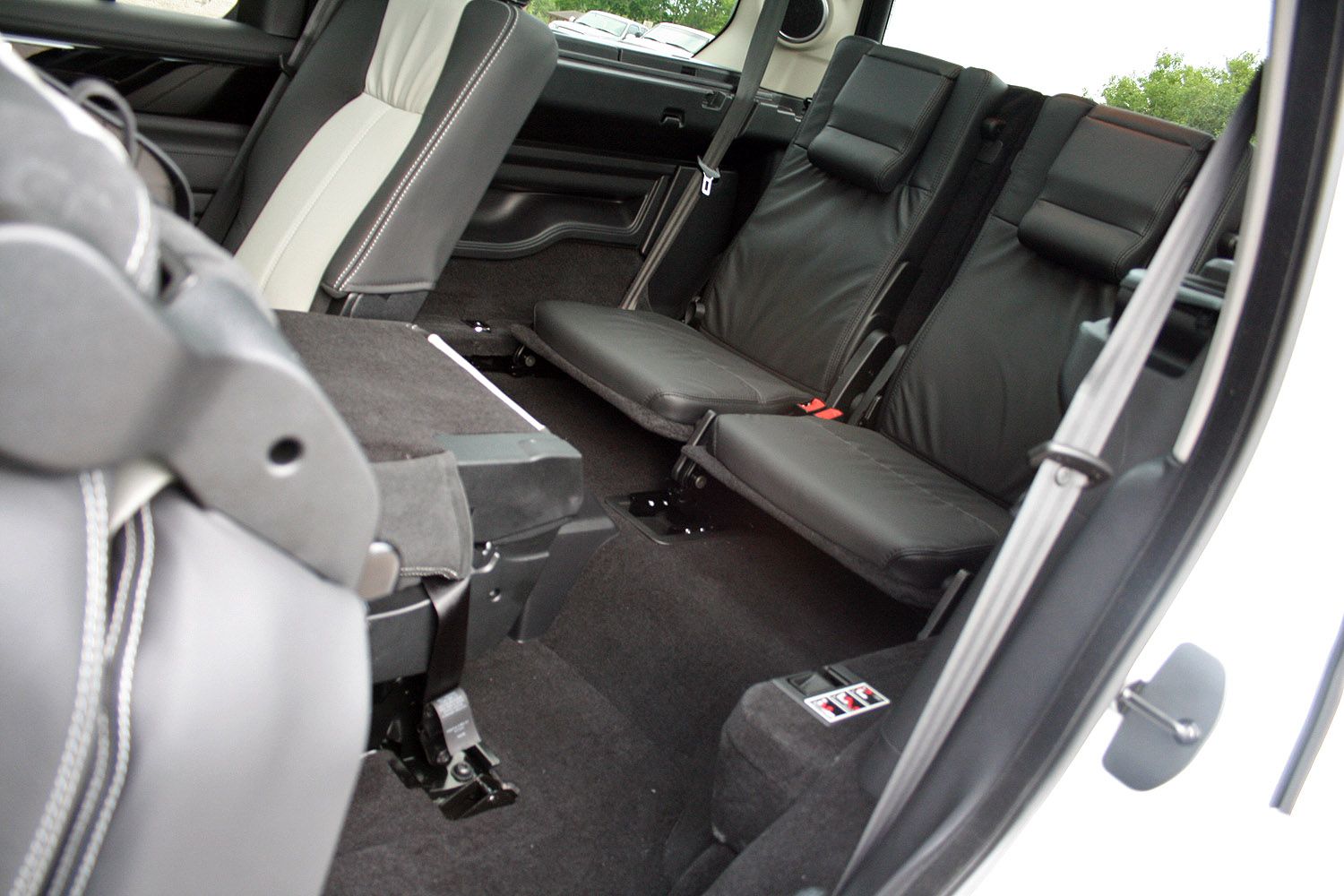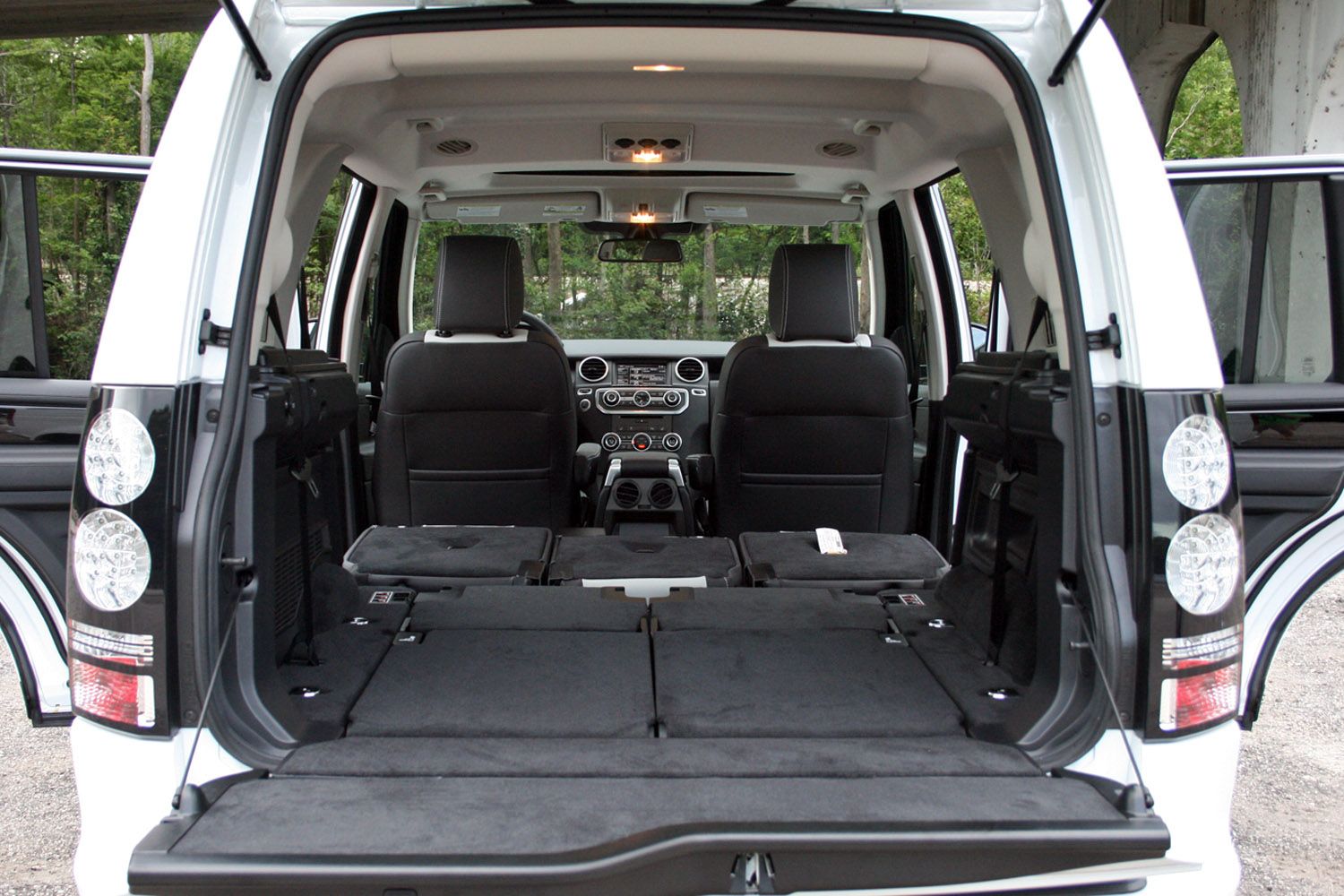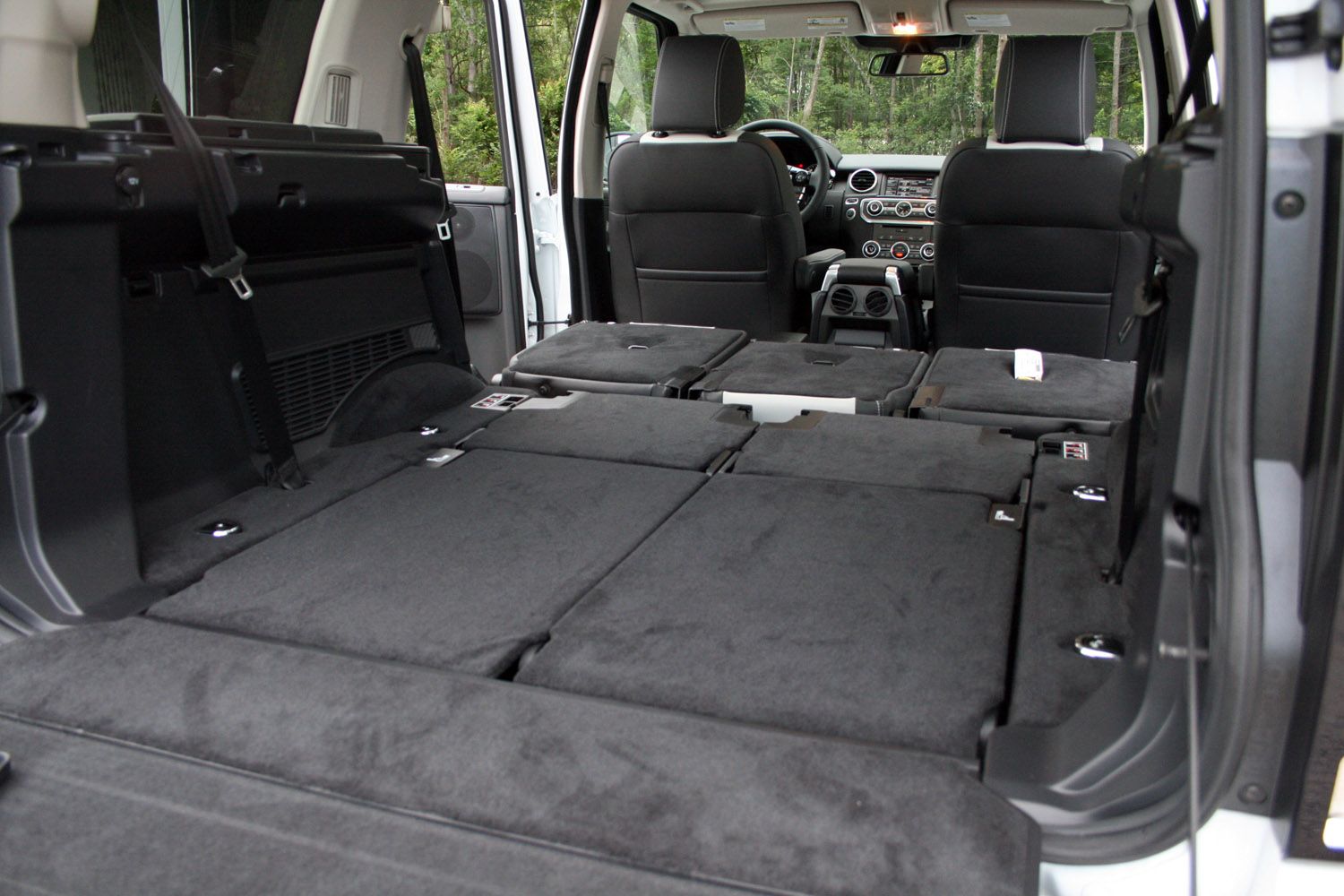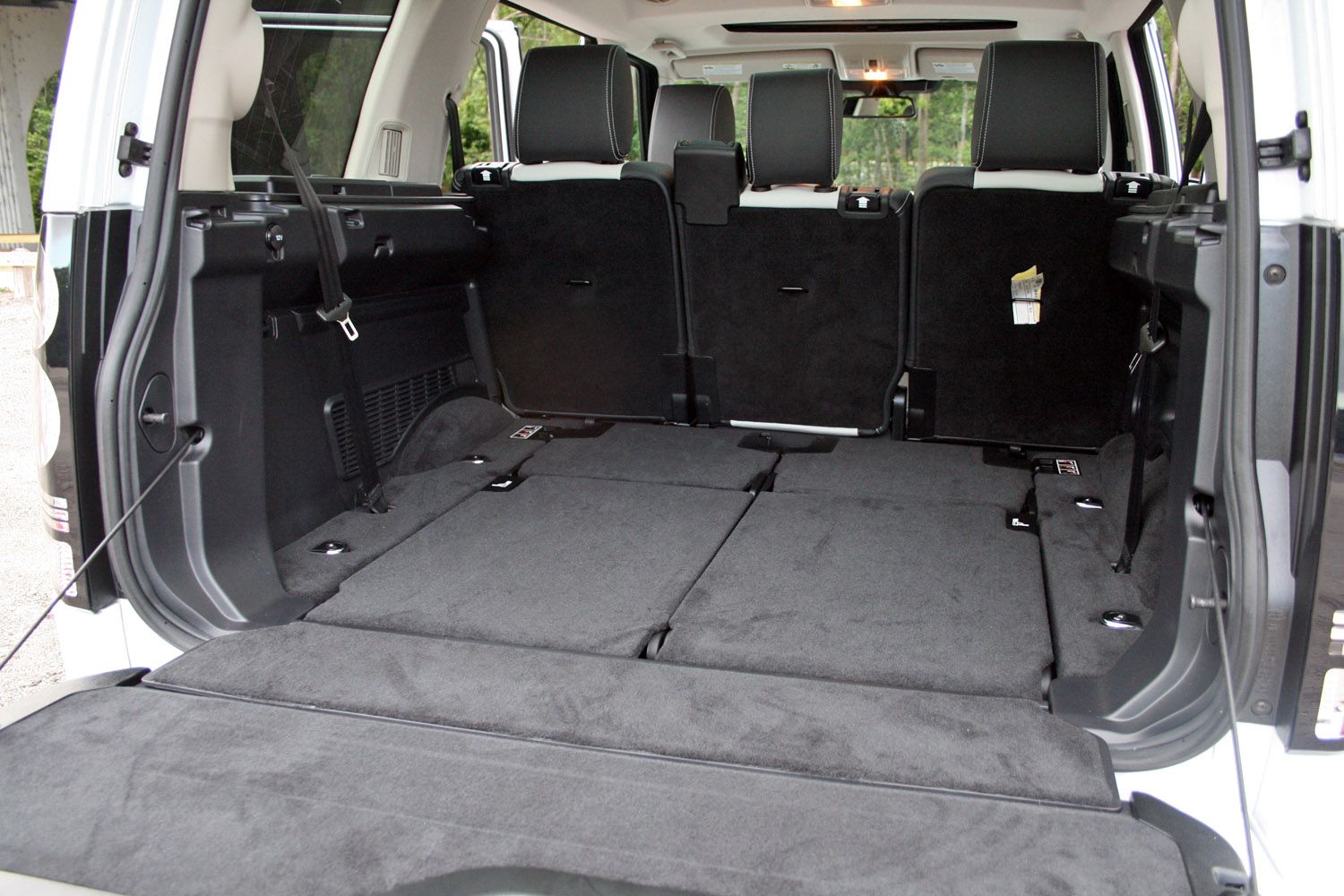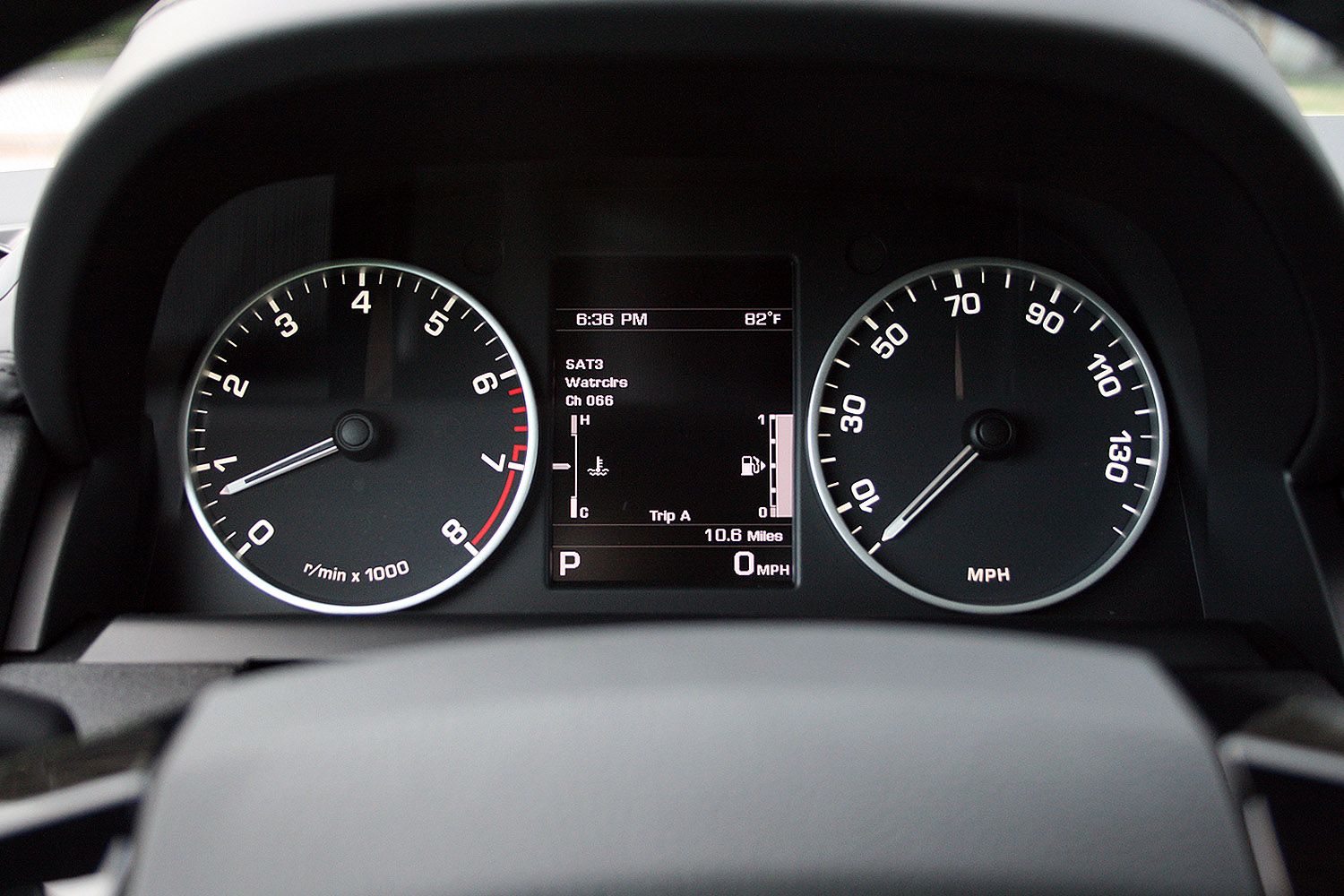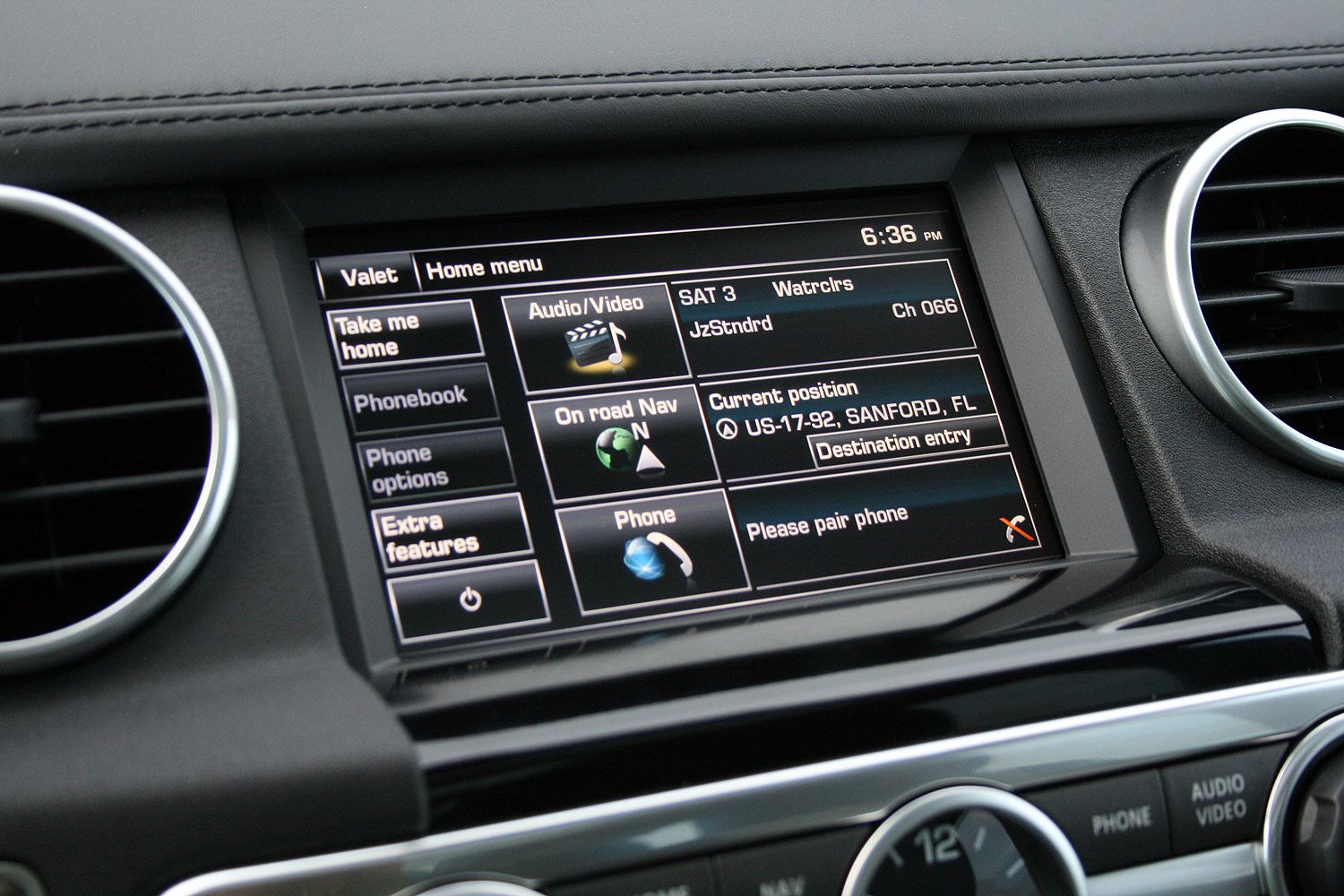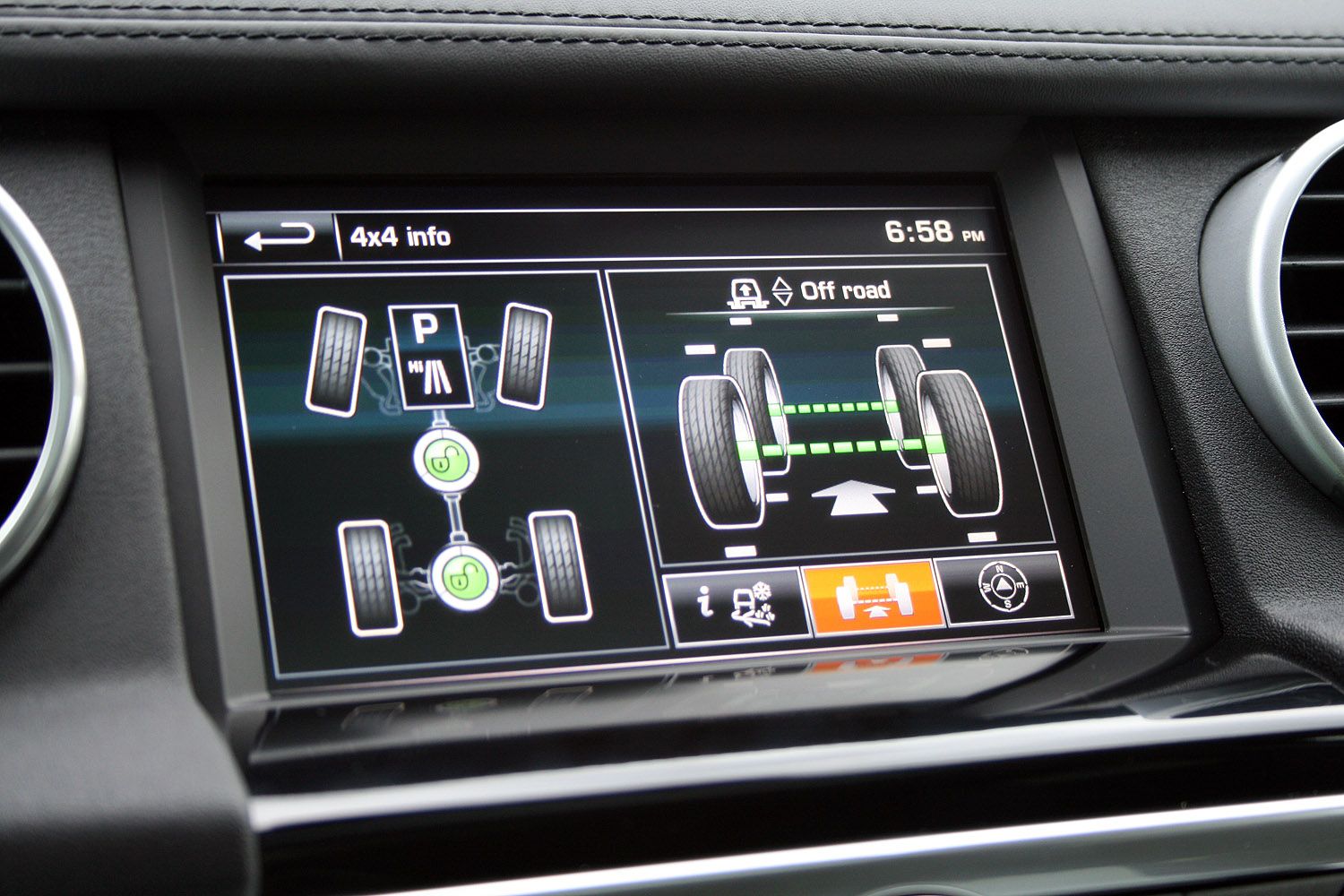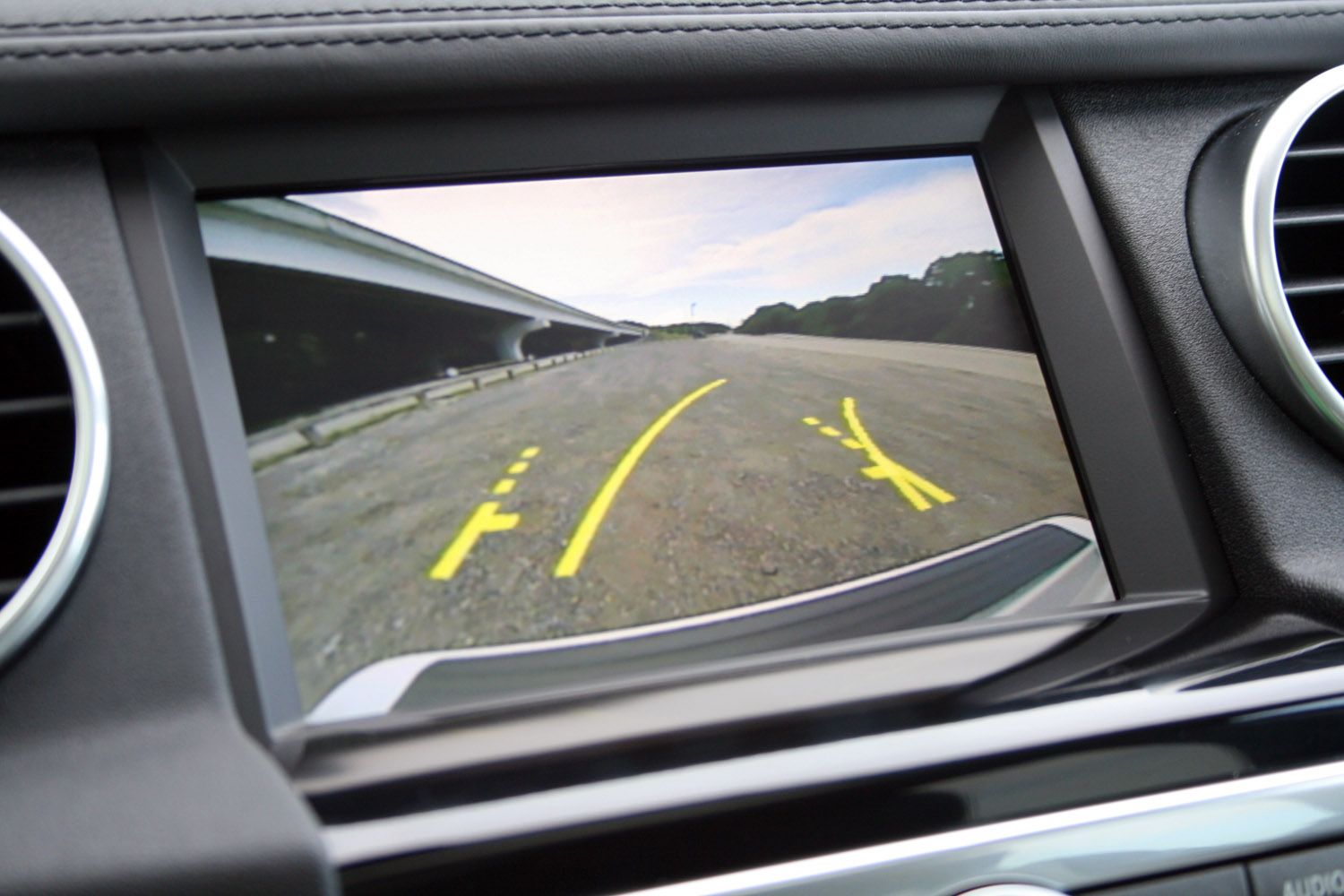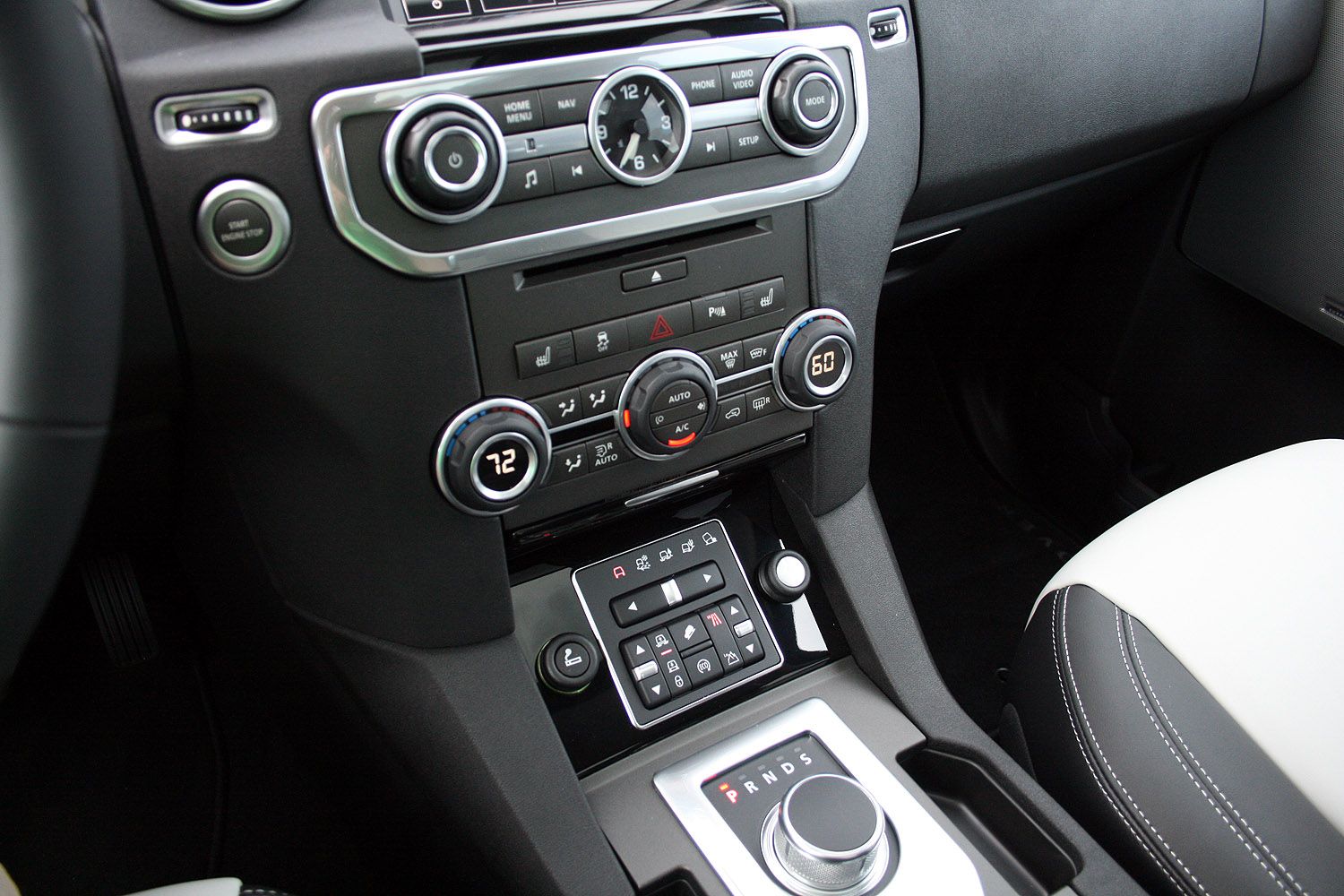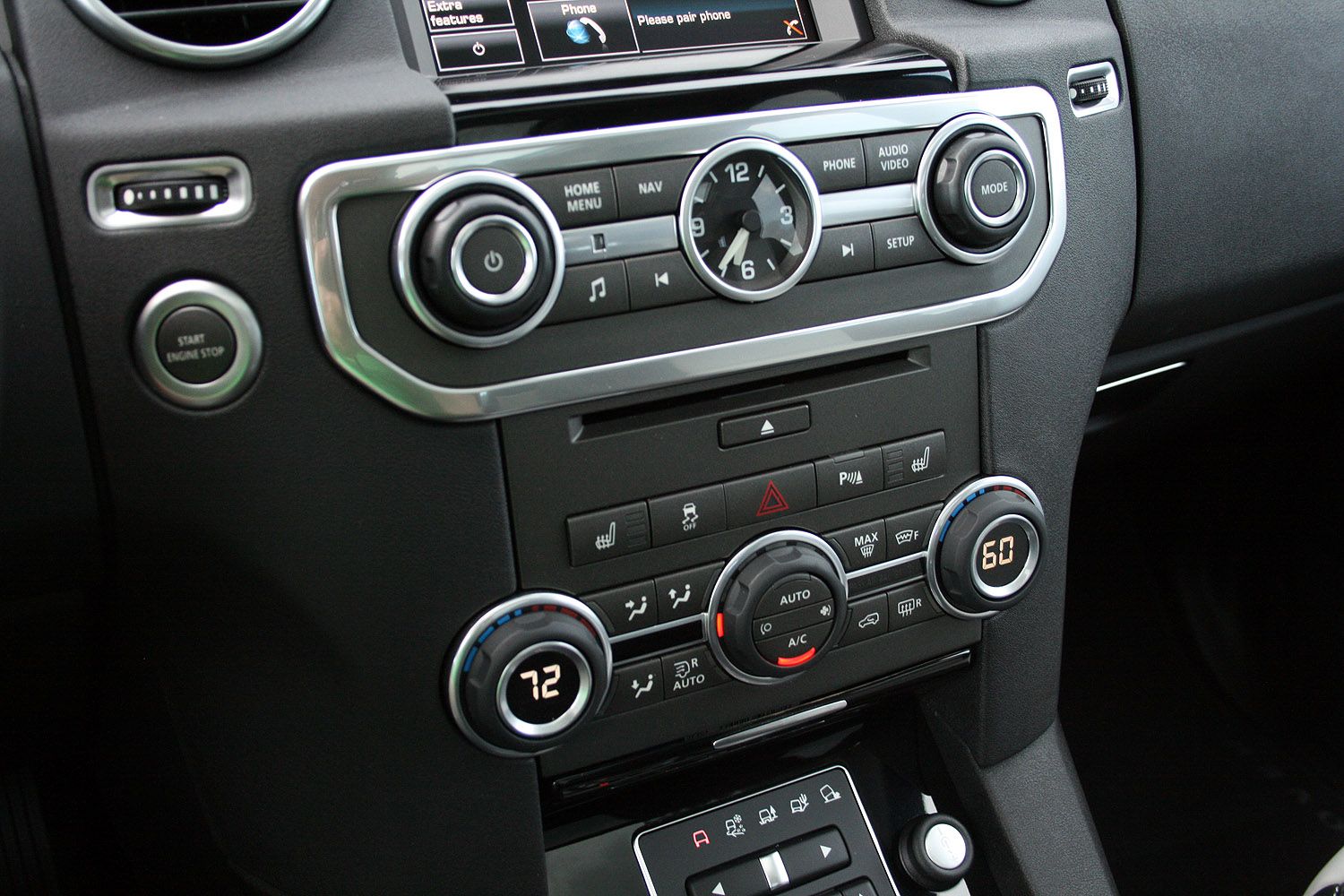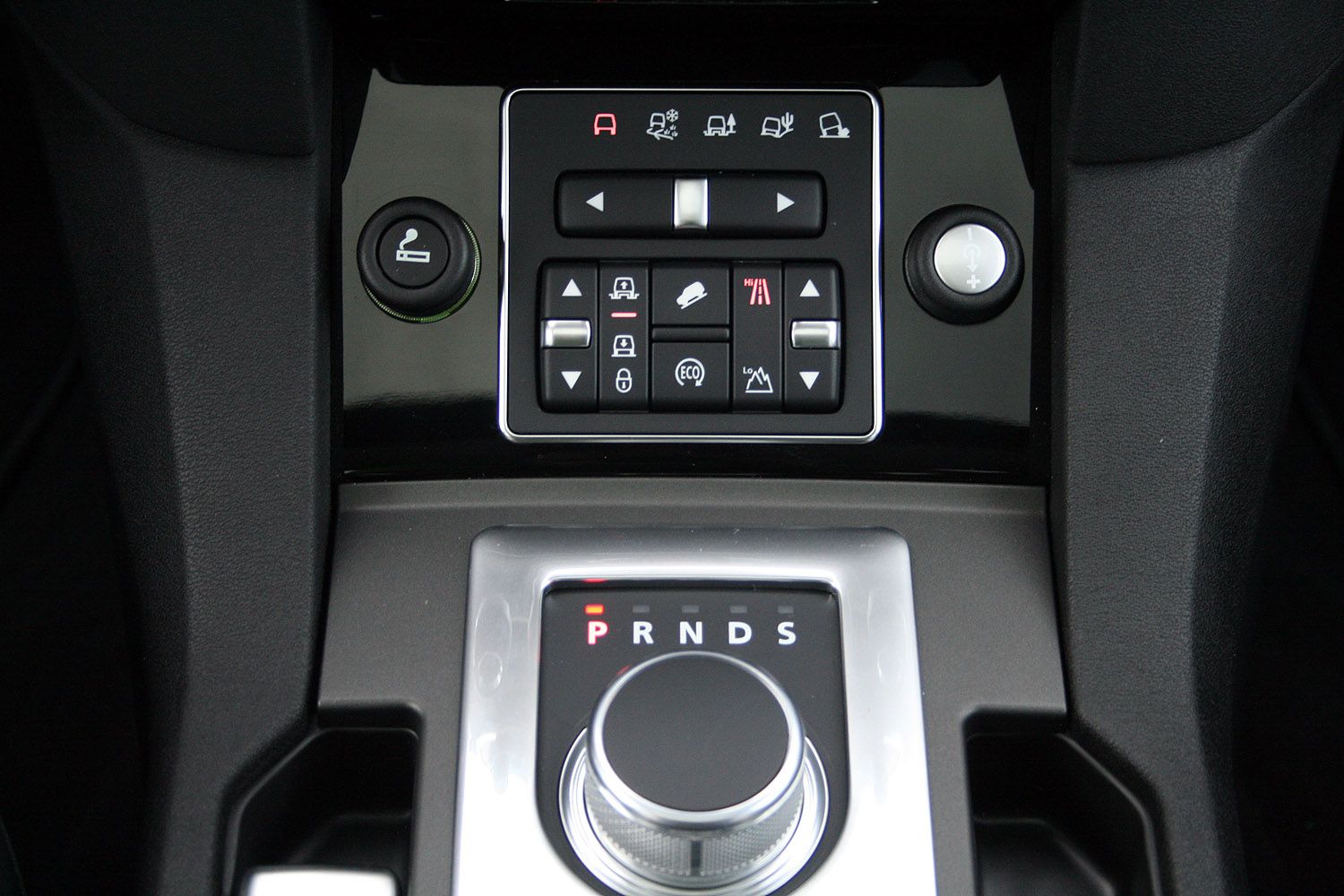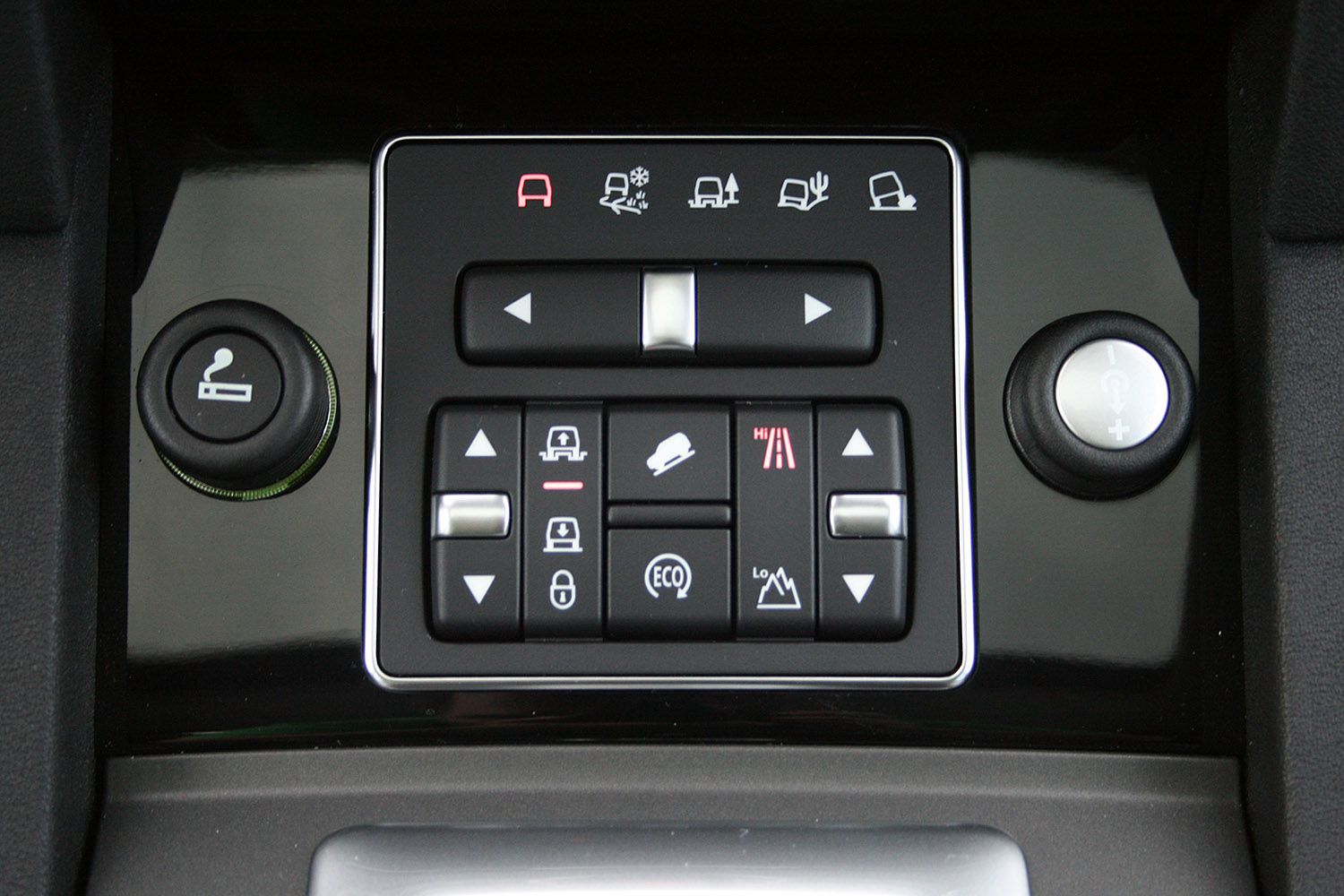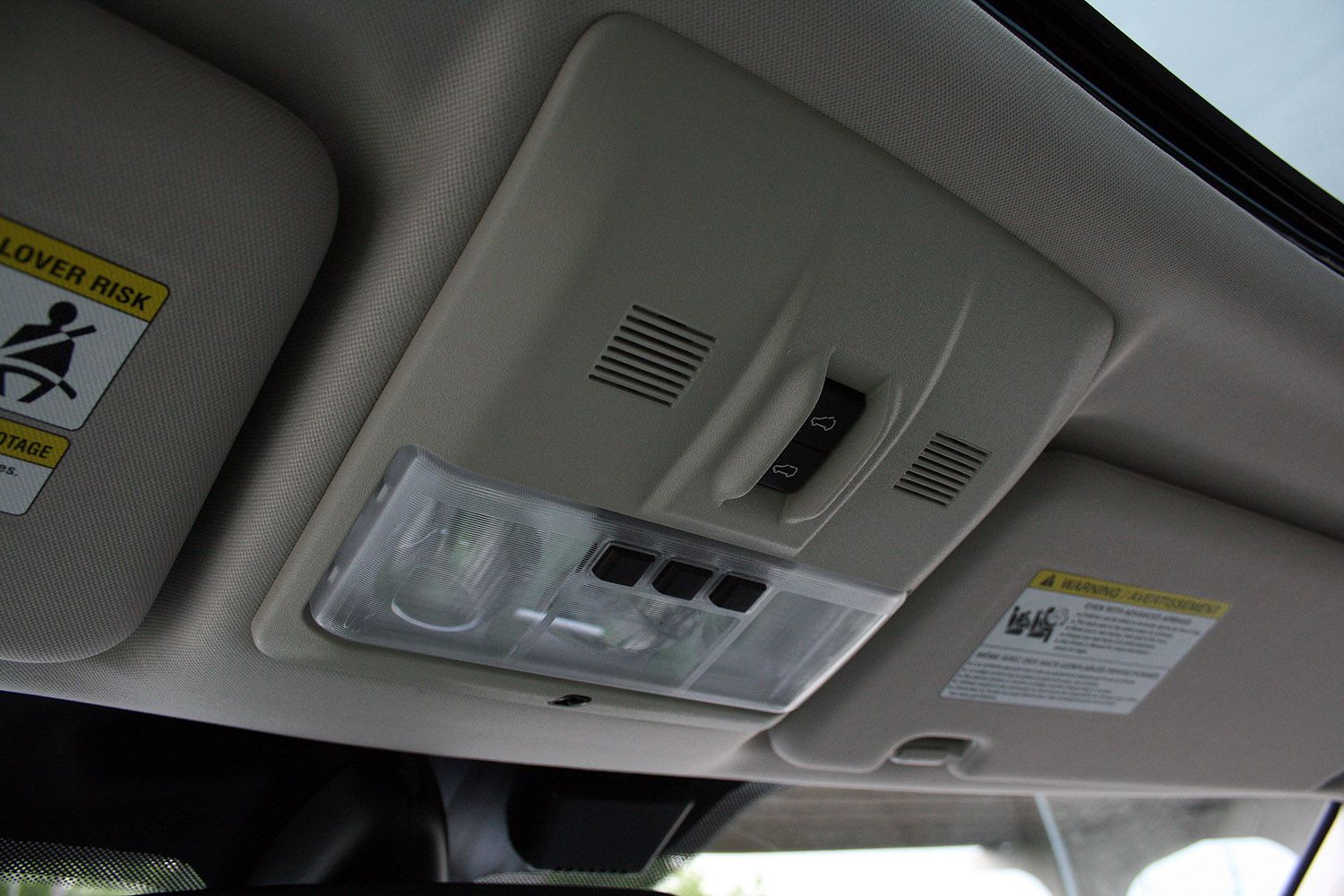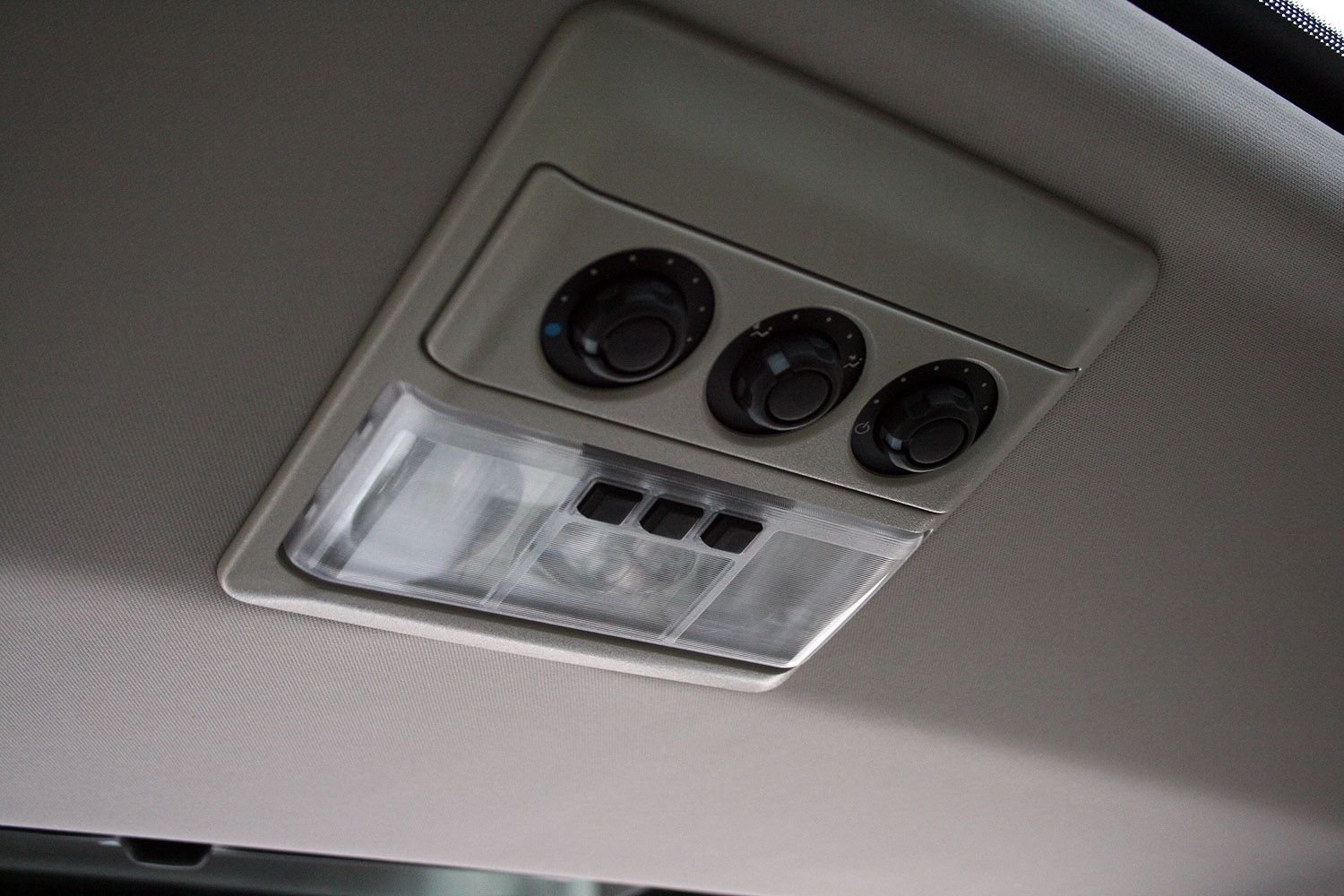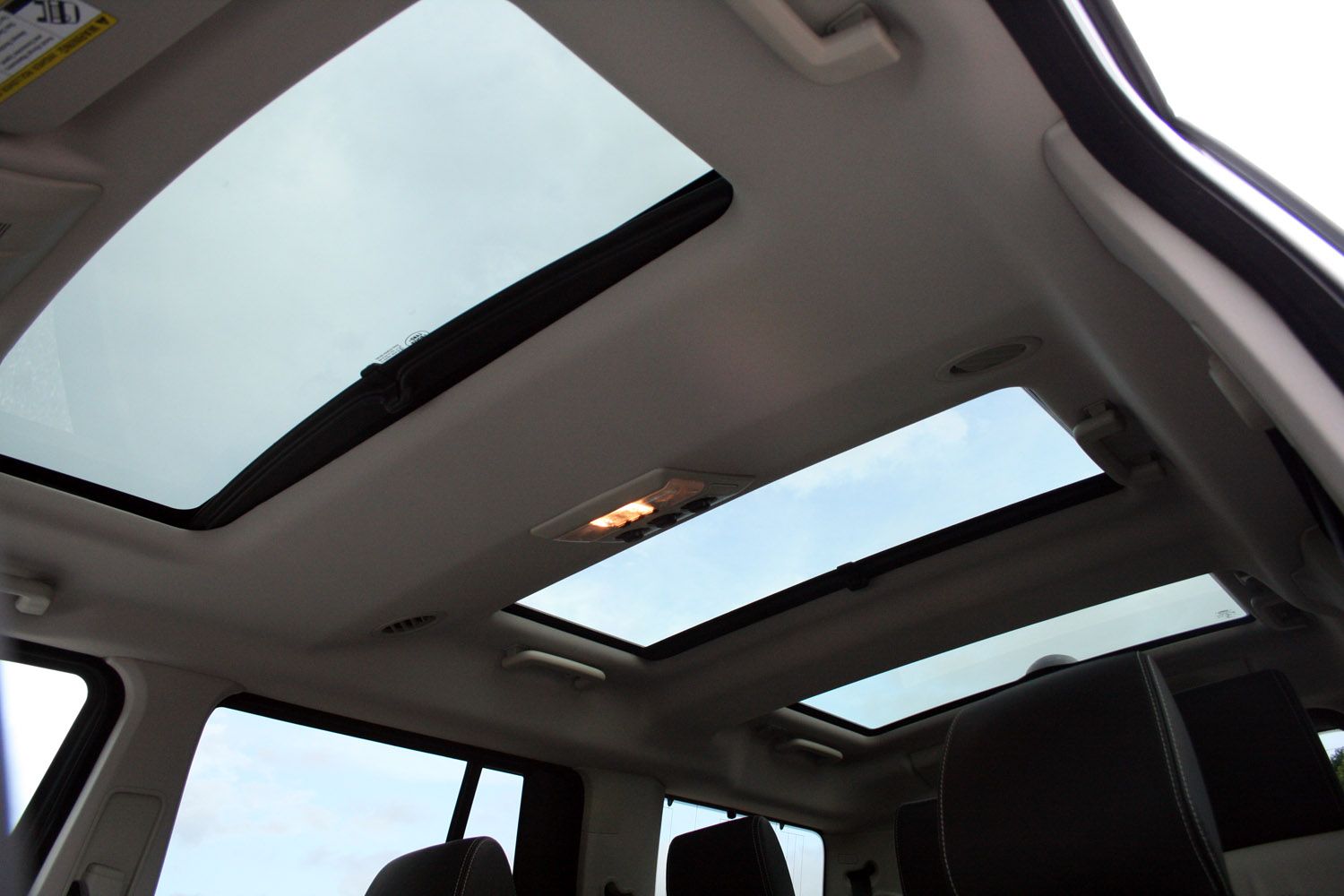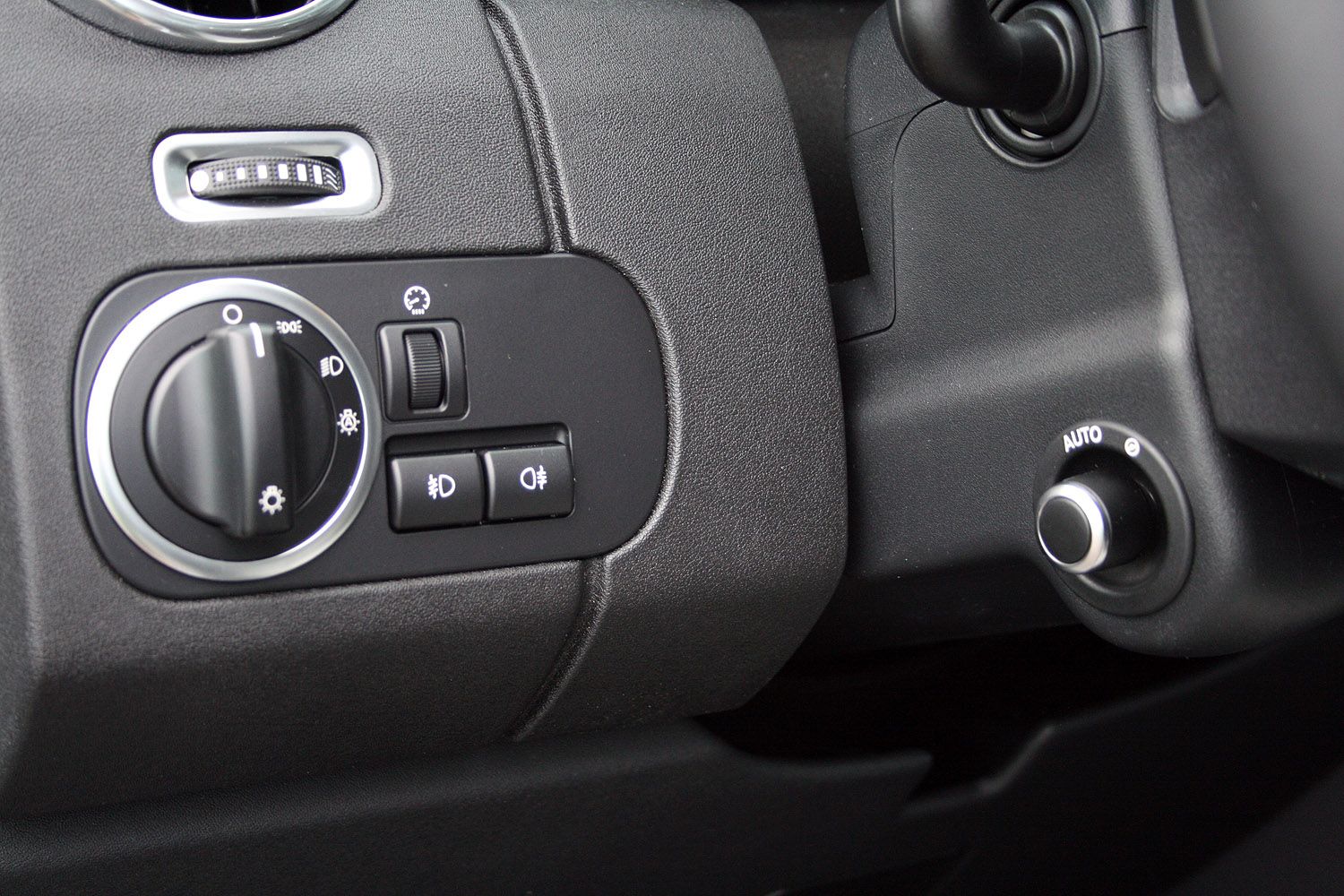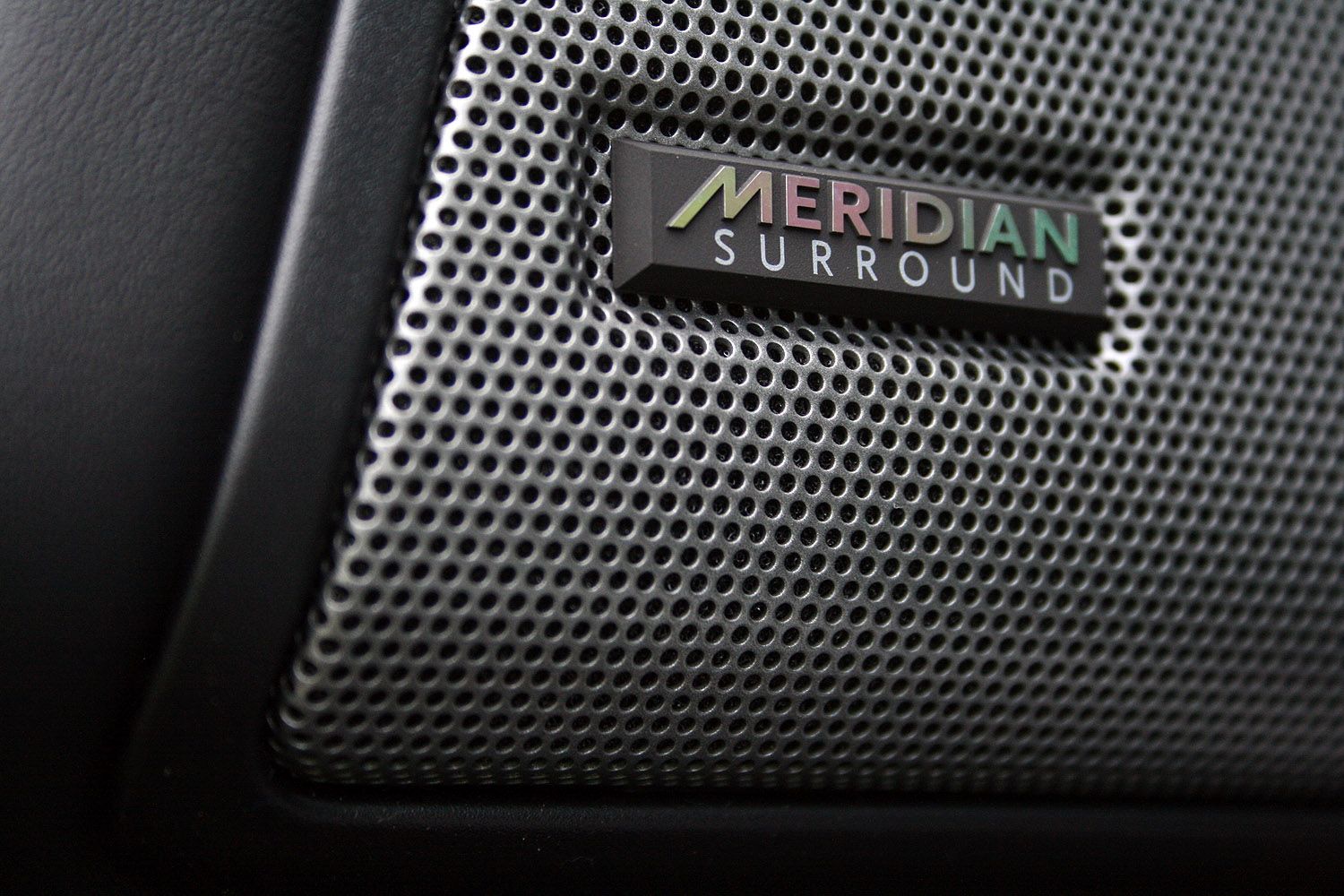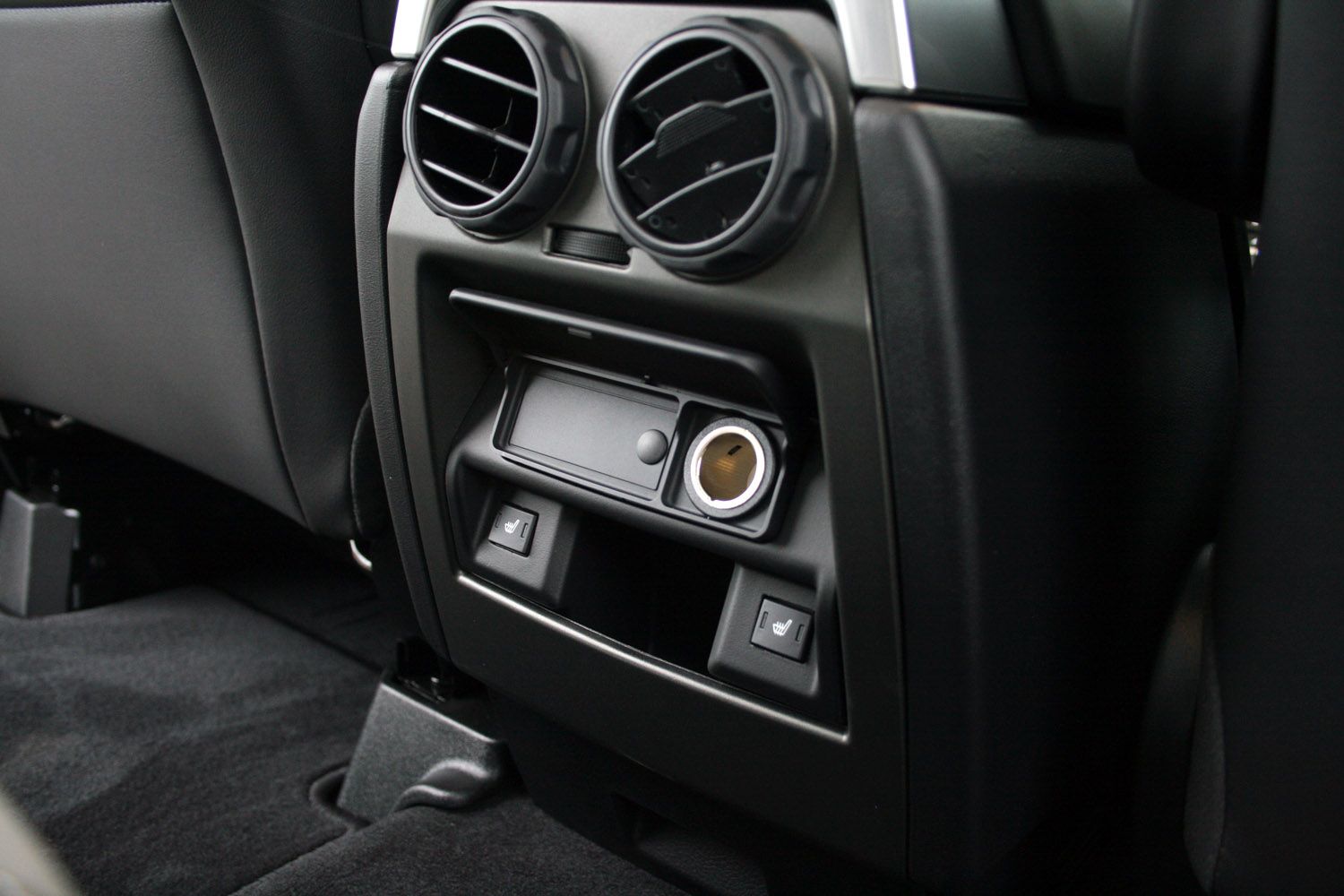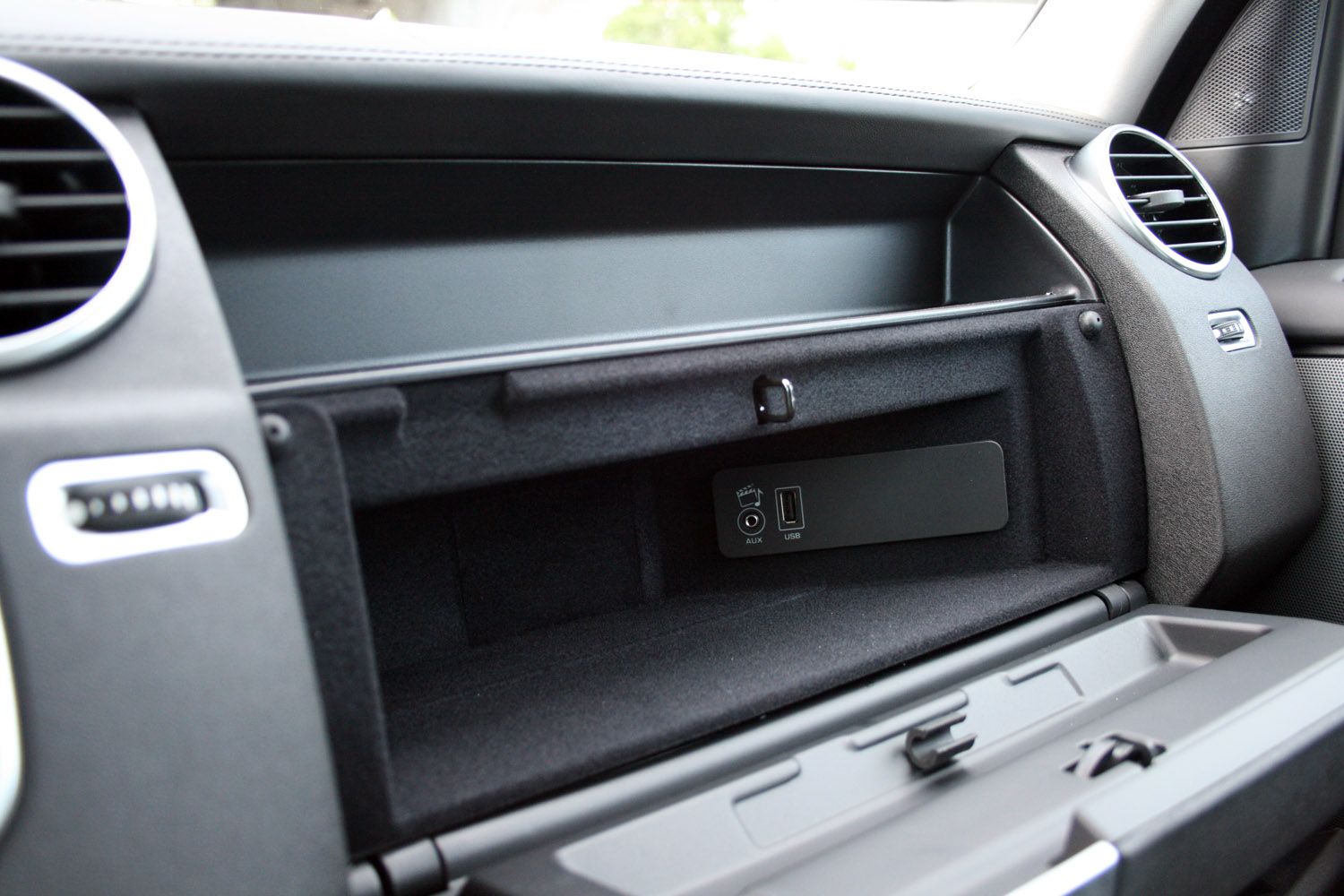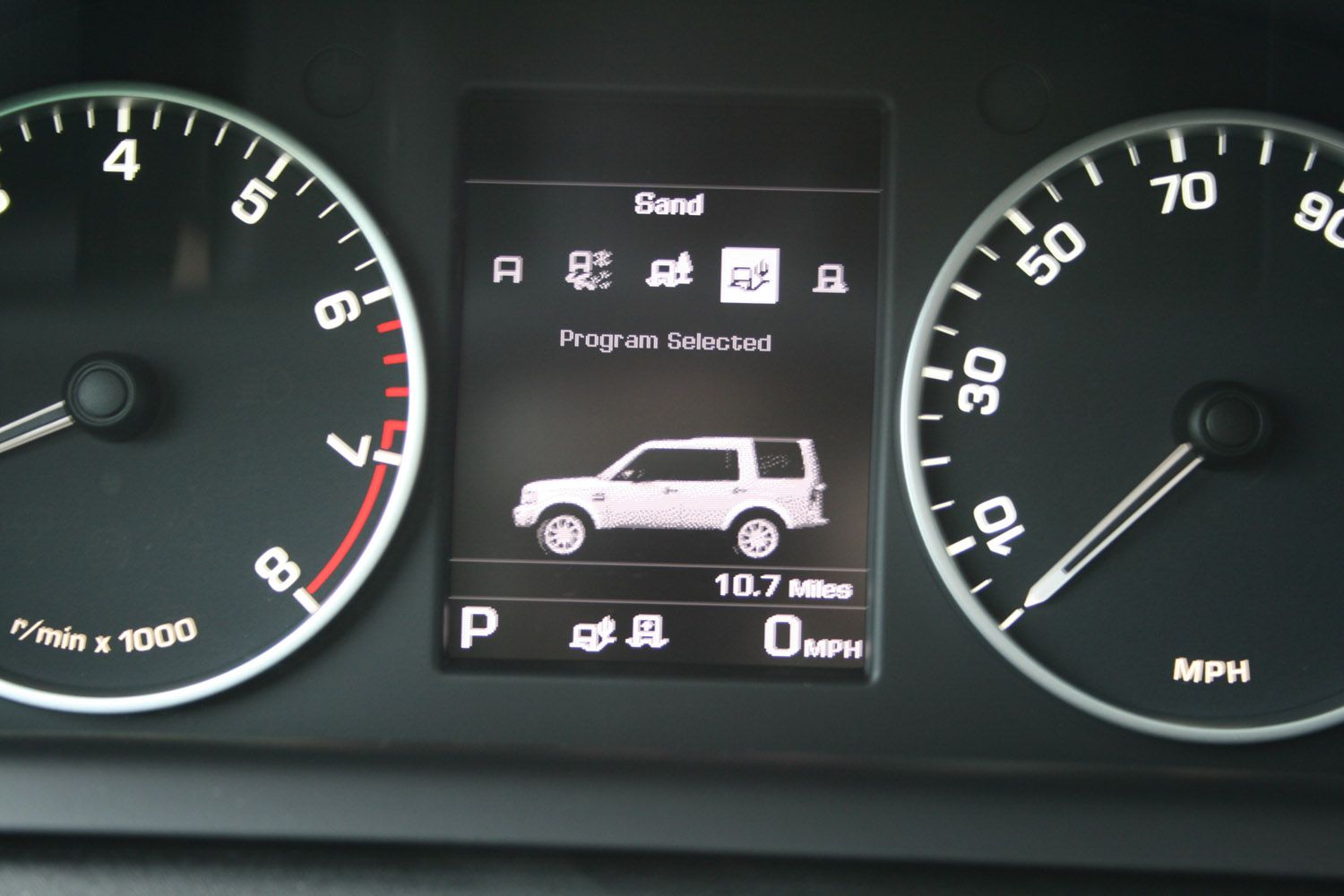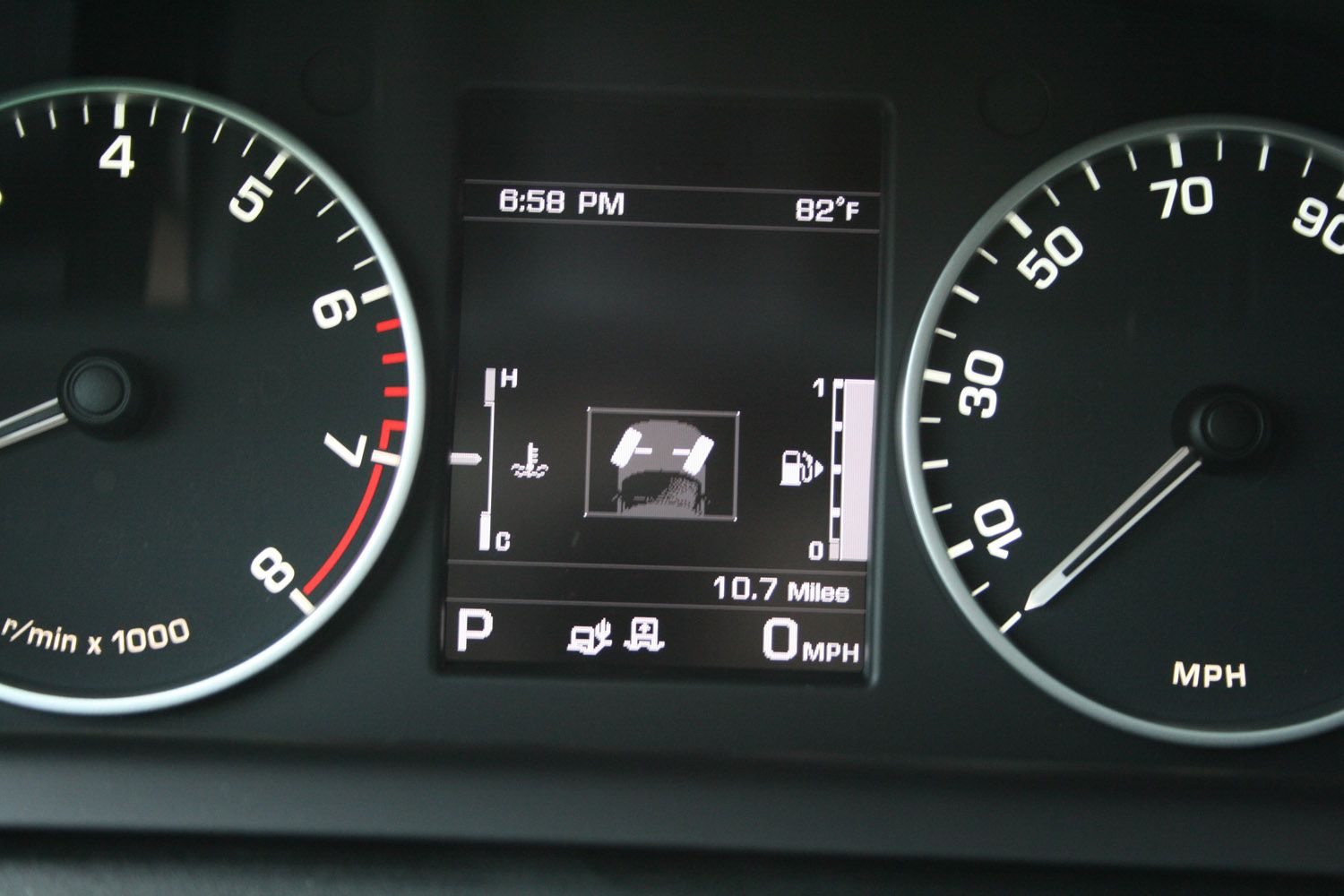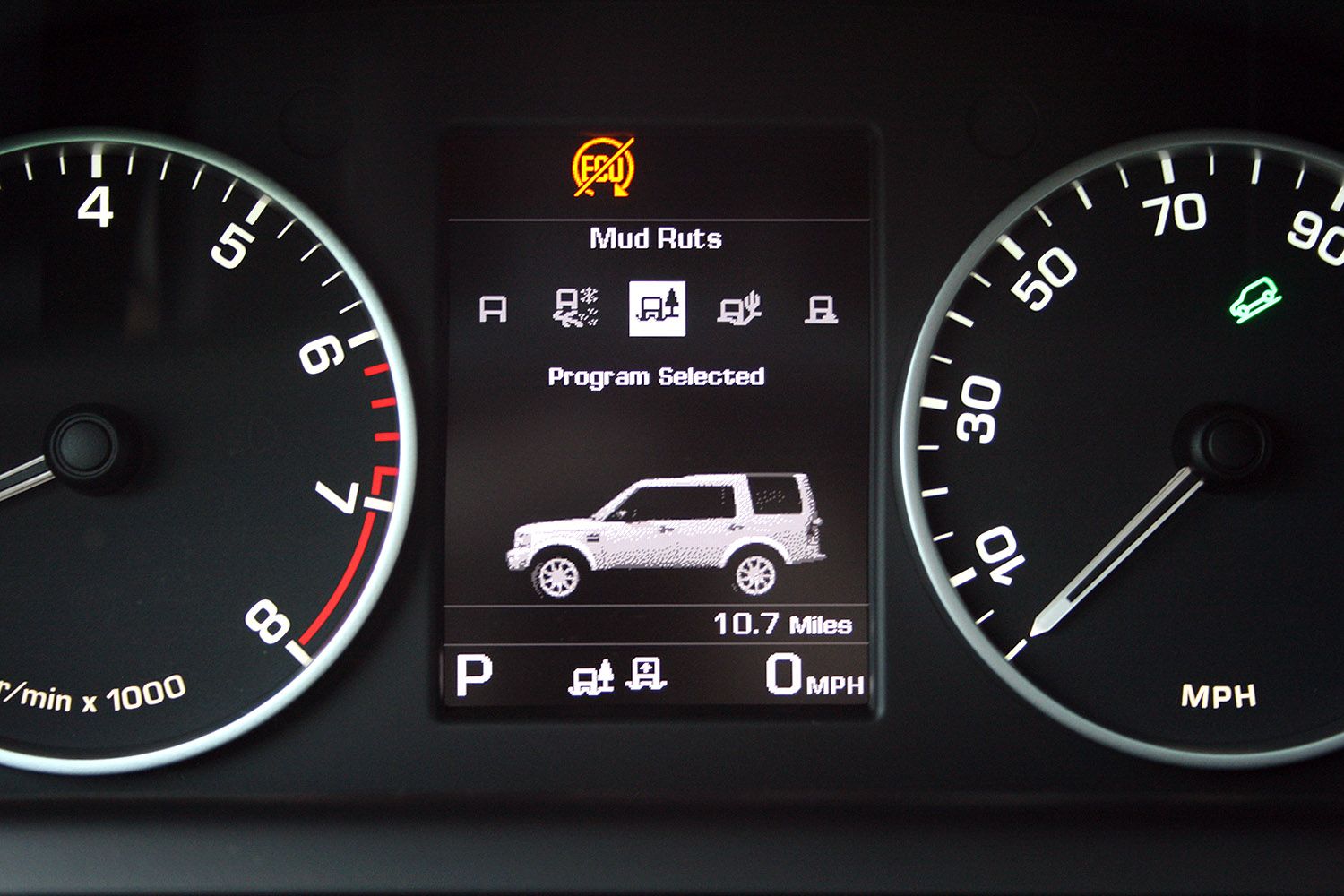The Land Rover Discovery->ke511 has been around since 1989 as the British automaker fought for more sales beyond its Defender->ke1858 and the upmarket Range Rover. Three generations of Discos have past and the fourth is currently in production; and recently could be spotted in my driveway. This newest member of the Discovery family still carries the same iconic themes as the original, but now shoots for a market that’s decidedly more posh, yet it still undercuts the Range Rover on both price and luxuries.
Speaking on those themes, the LR4 is unmistakably the great grandson of 1989 model. Check out that stepped roof and the tall greenhouse. Take a look at uniquely shaped rear window. The cues are hard to miss. The same goes for the inside as well. Though completely modernized, the LR4 still carries five passengers in the first two rows and offers additional seating for two smaller folks in the twin jump seats located out back.
So what’s the Land Rover->ke5034 like to live with? Keep on reading to find out.
Continue reading for the full review
2015 Land Rover LR4 - Driven
- Make: Array
- Model: 2015 Land Rover LR4 - Driven
- Engine/Motor: V6
- Horsepower: 340
- Torque: 332
- Transmission: eight-speed auto
- [do not use] Vehicle Model: Array
Exterior
As I mentioned above, the Land Rover LR4 carries those unmistakable looks that made the original Discovery so popular and recognizable. But what’s new about the LR4 that the LR3 – or third-generation Discovery as it’s called nearly everywhere else besides the U.S. – didn’t have? Well for one, the LR4 has a more high-end look to it. Clear lenses and LED lighting elements front and back lend a more flashy appearance, while a redesigned front grille and headlight assembly make for a less plastic-y appearance.
My tester came with the Black Design Package. For an extra $3,500, the 20-inch wheels, grille, side vents, hood lettering, badges, and roof rails all come in a glossy black finish. That’s an expensive appearance package, but it does look good offset by the Fuji White paint job. Land Rover went beyond the grille when de-plastifying the Discovery. The LR3’s black plastic fender moldings are now body color on the LR4, as are more surface area on the front and rear bumpers.
Beyond appearances, the LR4 offers plenty of functionality. Loosen a few plastic screws front and rear, and you’ve got access to frame-mounted recovery points. The one in back is a substantial hunk of steel ready to pull lesser vehicles to safety. Below that is Land Rover’s unique, vertical-mounted trailer hitch receiver. It takes a special adapter in order to use a standard two-inch receiver hitch, but with all the right parts, the LR4 will lug 7,716 pounds worth of trailer.
Interior
Inside the LR4, Land Rover’s recent attention to detail is noticeable. The dashboard’s overall design is well laid out and purposeful in its function, while also recalling cues from the LR3’s instrument panel. Thankfully the sea of black plastics have been replaced by upscale materials like leather. What isn’t leather is a soft rubber material that seems easy to clean and resistant to fade.
Fit and finish are spot on as well. There are no squeaks, rattles, or miss-fitting panels. Everything seems well placed. Buttons have a soft feel when depressing them and knobs provide a smooth resistance in their turning. Up top is Jaguar Land Rover’s typical infotainment system. Like in my other JLR test vehicles, the system works well and is comprehensive on what it controls, but is sometimes slow to respond to touch. Included in the system is Land Rover’s 4x4i system, which displays all the happenings with the LR4’s wheels and locking differentials when in off-road mode.
Speaking of off-road, the LR4 also carries Land Rover’s fantastic Terrain Response 2 system. The control center features a rocker switch that toggles between the five off-road settings and a bank of switches that control high- and low-range gears, hill decent control, and the four-corner air suspension. But more on that later.
While the interior is a great place to spend time, the rear seats did provide a challenge when folding them. Gaining access to the third row seats requires pulling two separate levers in order to tumble the second row outboard seats. Even still, the mechanism was hard to operate. I couldn’t imagine a kid having to do it. Folding the third row is no simpler. A lever resides just outboard of the bottom seat cushion and is hard to reach from outside the vehicle. Climbing and stretching are needed for folks my size (five foot, six inches) to get the seats up or down.
The same goes for the second row seats. Folding them flat requires a pull of one lever to release the seatbacks, then the pull of a second lever to get the seat to kneel. Sure, the system works, but it’s showing its age. That’s especially true when considering push-button folding seats are the norm in $60,000 SUVs.
Powertrain & Underpinnings
Under the hood of the LR4 lies a familiar engine to JLR fans. It’s the 3.0-liter supercharged V-6 that’s also found in a myriad of Jaguar products such as the F-Type. In this application, the V-6 offers up 340 horsepower and 332 pound-feet of torque. That’s enough grunt to move this 5,600-pound SUV to 60 mph in just under eight seconds.
Backing the V-6 is ZF’s electronically controlled, eight-speed automatic transmission. Like every other application the transmission is used in, it is controlled by an electronic shifter. Jaguar Land Rover is fond of its rising rotary dial and the LR4 shows no exception. The transmission shifts very smoothly under normal acceleration and offers snappy shifts under hard throttle. Steering wheel-mounted paddle shifters give the driver manual control of shifting.
Of course, the Land Rover is nothing without its class-leading AWD system. The full-time system offers great all-weather confidence by sending power to whatever wheel needs the torque. When the going gets tough, the LR4 will automatically lock its center differential, providing a 50/50 torque split between the front and rear axles. Like the Range Rover and LR3 before it, the LR4 boasts a four-corner air suspension that both offers a smooth ride and adapts to changing terrains. By pushing the dash-mounted button, the LR4 grows in height to provide excellent ground clearance. The only major trade-off with the air suspension is the higher the system rides, the less comfortable the ride becomes.
Jaguar Land Rover has been making strides to go all aluminum in many of its vehicles’ construction. Unfortunately for the LR4, its transformational diet has yet to happen. Though it pays the price in weight and fuel consumption, the LR4’s body-on-frame design is tougher than nails – exactly what you’d want when exploring African jungles or South American mountains.
Driving Impressions
Unless you’ve driven a cab-over truck, you’ll never experience a more visually impressive view of the road. The seating position inside the LR4’s tall cabin is high – very high. The low, sloping hood and upright windshield provide an unparalleled view forward while the large side windows and tall roof give excellent views rearward. Fold the third row seats flat and the view directly behind is impressive as well.
On the road, the LR4 handles well for such a tall vehicle. Make no mistake though: this is not a sports car. Where the Range Rover will give vibes of “Yes boss, I’d be happy to pass that car,” the LR4 says “Why are you in such a hurry? Look at the view!” Nevertheless, on-center feel from the leather-wrapped wheel is good, while off-center turns are rather heavy. Slow maneuvers are unusually heavy, in fact – much heavier than the Range Rover’s steering system. While this might pose challenging in technical off-roading, I got acclimated to it within a day or so of normal driving.
Acceleration is modest and smooth, unless you bury the throttle. At that point, the V-6 wakes up, the transmission downshifts several gears, and the LR4 lurches forward with much effort. Braking feel is good and stopping distances are average.
The LR4 also shows its age when it comes to fuel consumption. The EPA rates it at 15 mpg city, 19 mpg highway, and 16 mpg combined. During my week-long stint with the Land Rover, I averaged right at 16 mpg. Oh, and the supercharged V-6 requires premium fuel. Needless to say, this SUV is not for hypermilers.
Price
Land Rover has kept its luxury appeal with the LR4 without making it exorbitantly expensive. The base price starts at $50,400. My tester came far more equipped than the base model, however. It was loaded with the HSE Luxury package. The $10,200 upgrade includes the premium leather seats, ambient lighting, center console cooler box, power-adjustable steering column, 825-watt Meridian sound system, and SiriusXM radio.
Beyond that, the tester came equipped with the $1,350 Heavy Duty package, which includes the two-speed transfer case (rather than the standard, single-speed unit), rock crawl mode, a full-size spare, and the locking rear differential. Additionally, there is the $650 towing package, the $350 black interior trim upgrade, and the $3,500 Black Design Package mentioned earlier.
Tack on the $800 destination fee and this LR4 totals out to $68,000.
Competition
2015 Audi Q7
While the Audi Q7 is getting a welcomed refresh for 2016, the 2015 model is still one the LR4’s direct competitors. However, the Audi certainly favors competing on paved roads, even with its Quatro AWD system. The Q7 offers a more upscale, car-like interior than the Land Rover, along with three engine options consisting of two supercharged 3.0-liter V-6s and a 3.0-liter turbodiesel. The Q7 offers more sport than it does utility, though three rows of seats offer room for seven.
Pricing wise, the Audi undercuts the LR4 by a smidge. The Q7’s starting price begins at $47,700.
Read our review of the Audi Q7 here
2015 Jeep Grand Cherokee
Ok, so the Jeep Grand Cherokee might not be on the same level luxury-wise as the LR4 or Audi Q7, but the Jeep does give the Land Rover a run for its money off-road. Like the LR4’s Terrain Response system, the Jeep offers its Selec-Terrain traction control system. Selec-Terrain has settings for snow, sand, mud, and rock, along with an auto mode. An available air suspension gives the Grand Cherokee a variable ride height like the LR4 as well.
The Jeep also offers three engine choices. Customers can choose from the standard 3.6-liter Pentastar V-6, the 5.7-liter HEMI V-8, or the fuel-sipping 3.0-liter EcoDiesel V-6.
Prices for the Grand Cherokee start at $38,965 for a 4WD version equipped with the Selec-Terrain system. Check all the boxes on the order form, and you’ll get the price to max out just under $60,000.
Read our review of the Jeep Grand Cherokee here
Conclusion
All told, the Land Rover LR4 is an amazing machine that holds true to its go-anywhere heritage while wearing a tuxedo. Its supercharged V-6 powerplant offers enough grunt to muster the SUV around town while giving more than ample torque when heading off road. Its comfortable interior affords one of the best outward view of any modern automobile and its folding rear seats offer as much utility as a small cargo van.
With the price of luxury vehicles growing ever higher these days, it’s nice to know Land Rover offers one that still has plenty of capability wrapped behind its pretty LED lights and leather-wrapped interior. The LR4 might not be the most posh or flashy luxury ride on the market today, but it sure fights for first place in the utility category.

